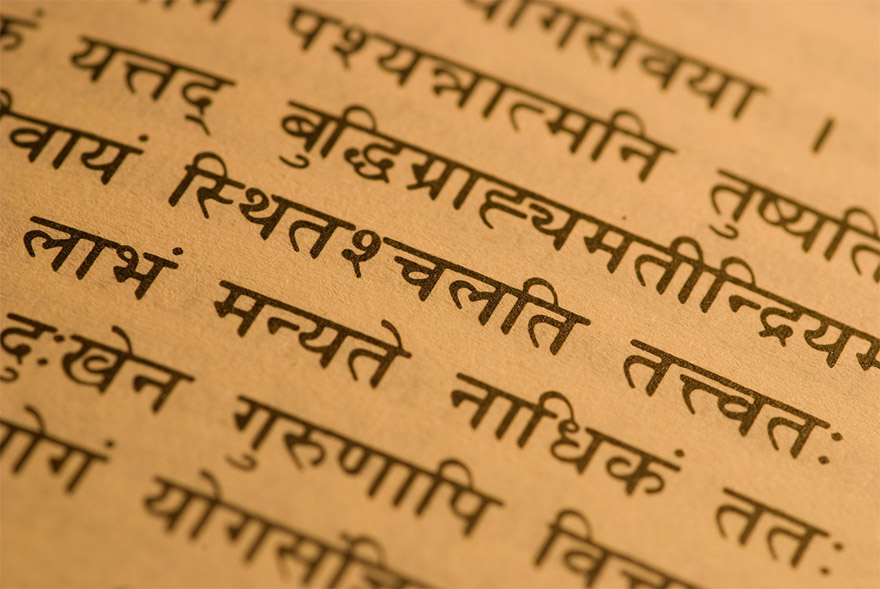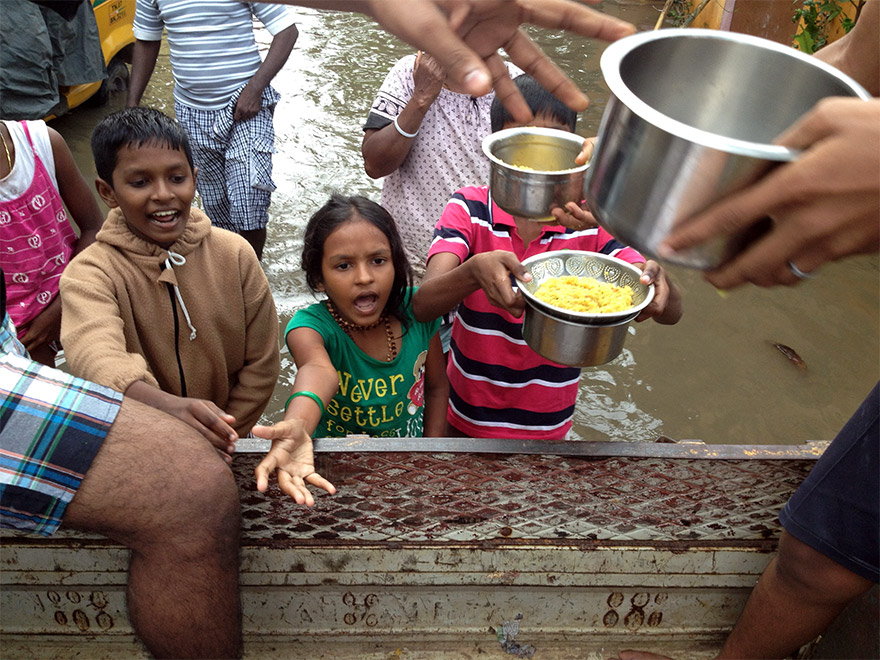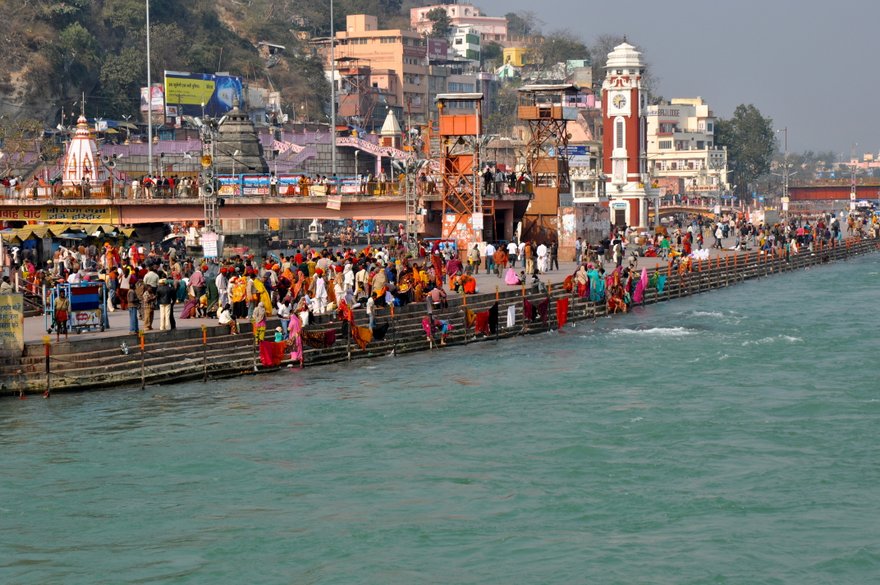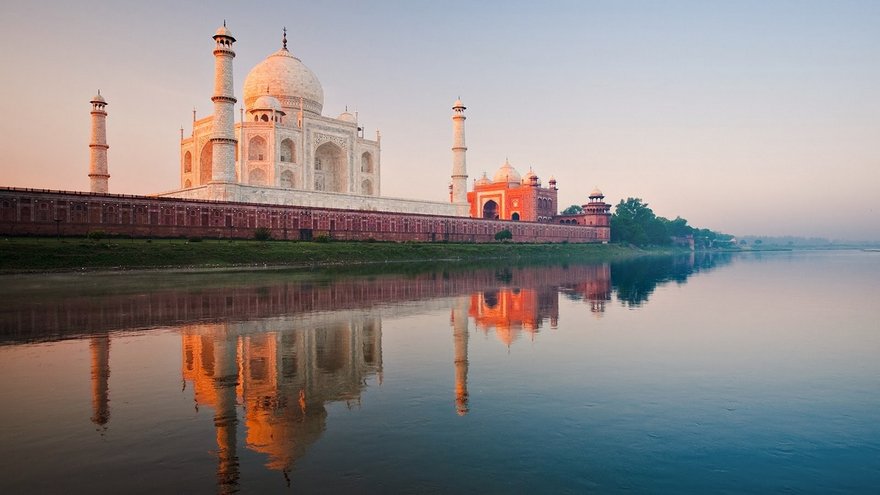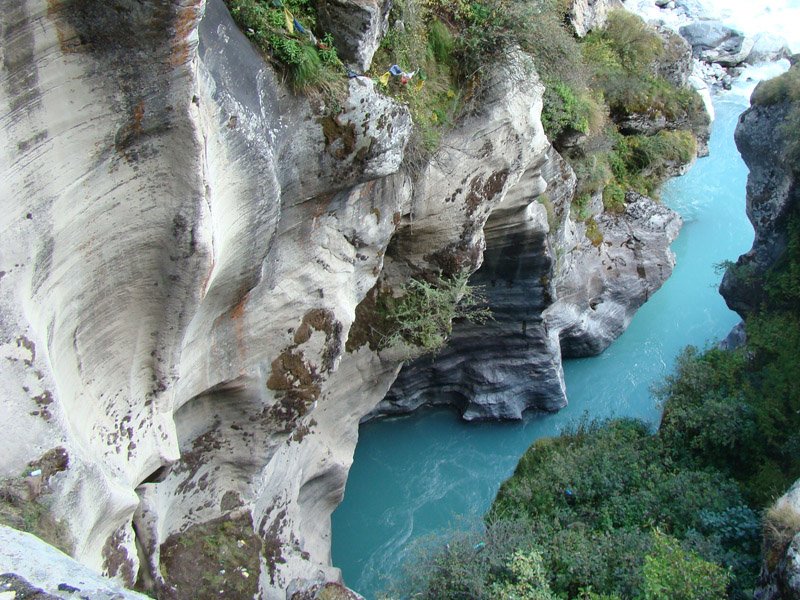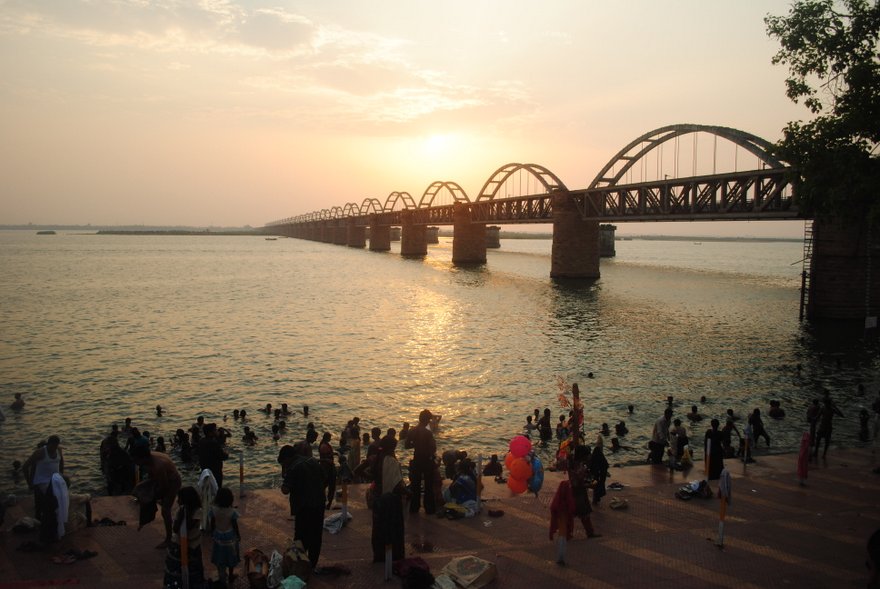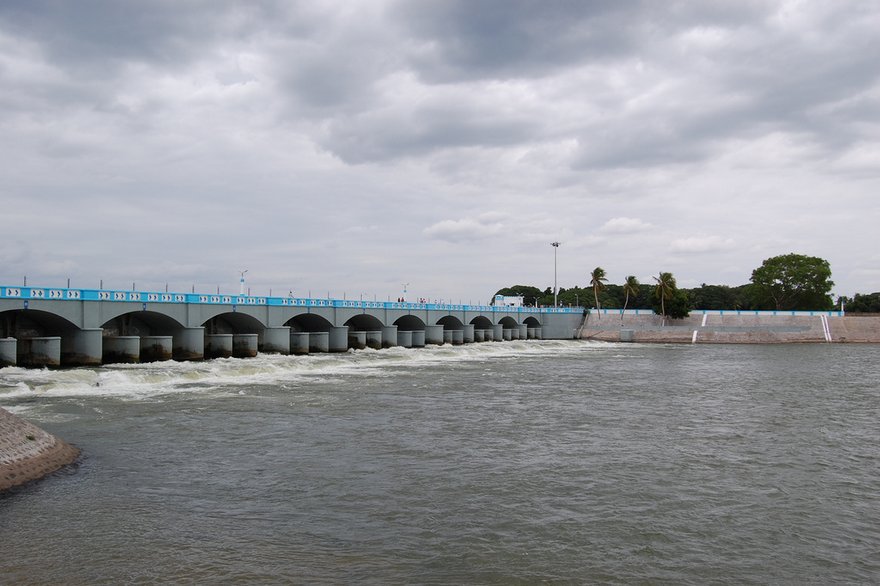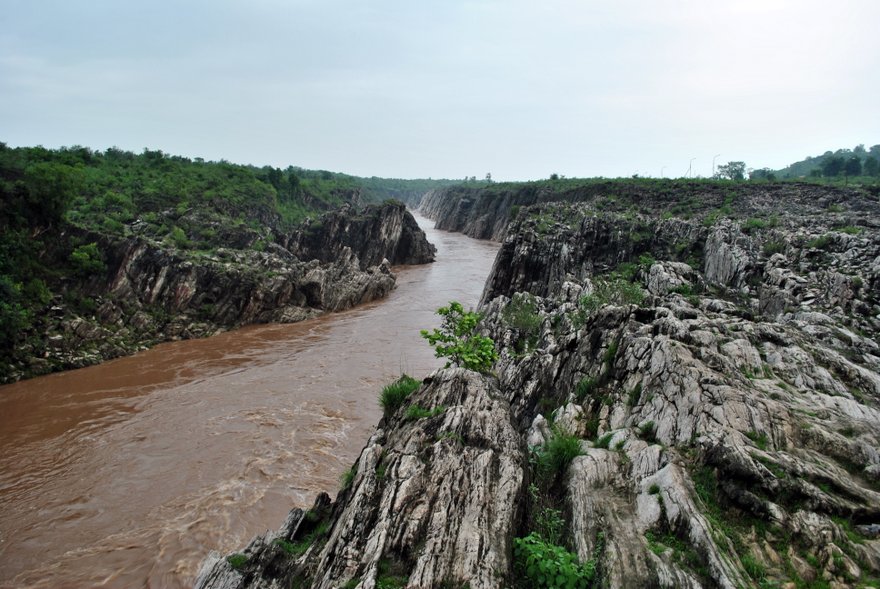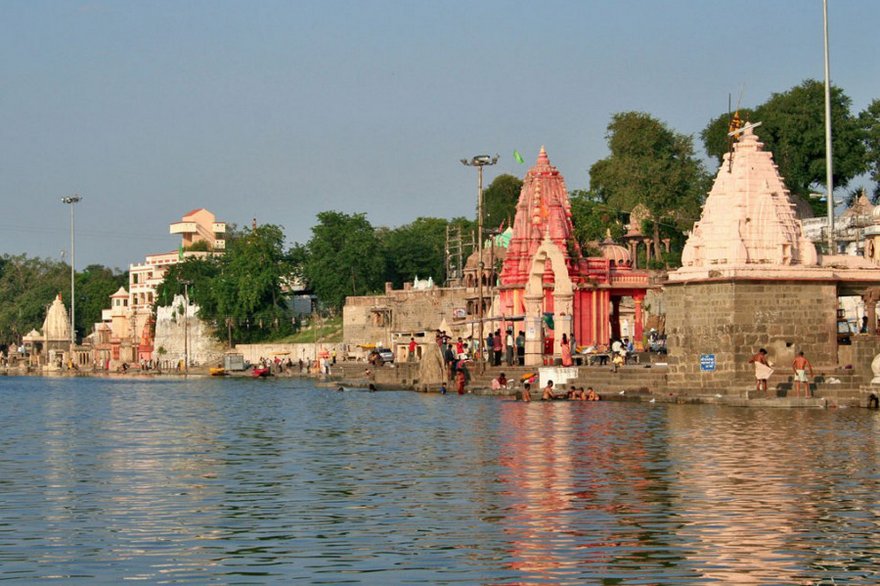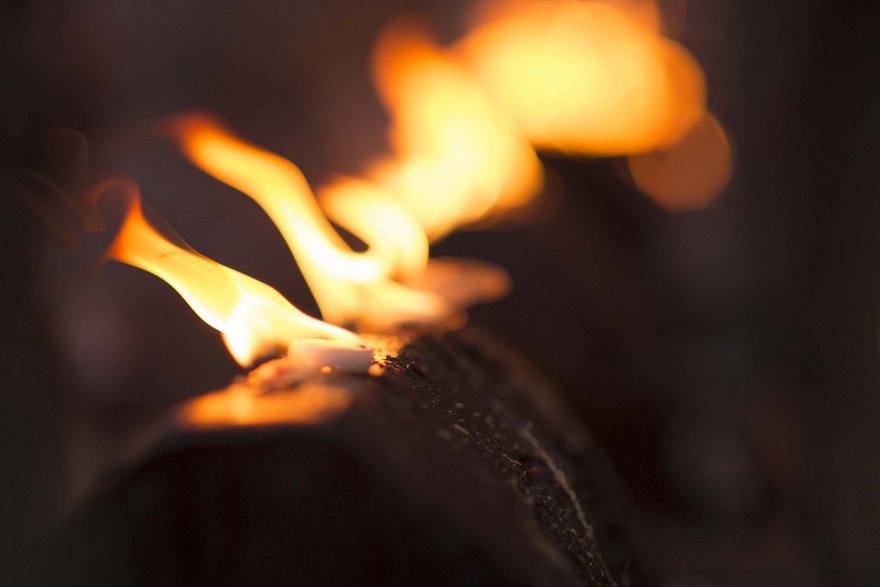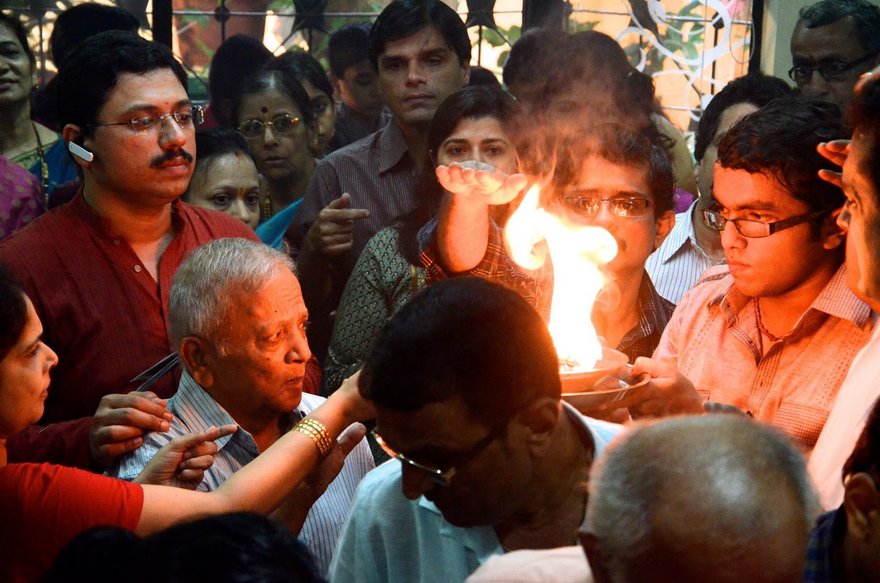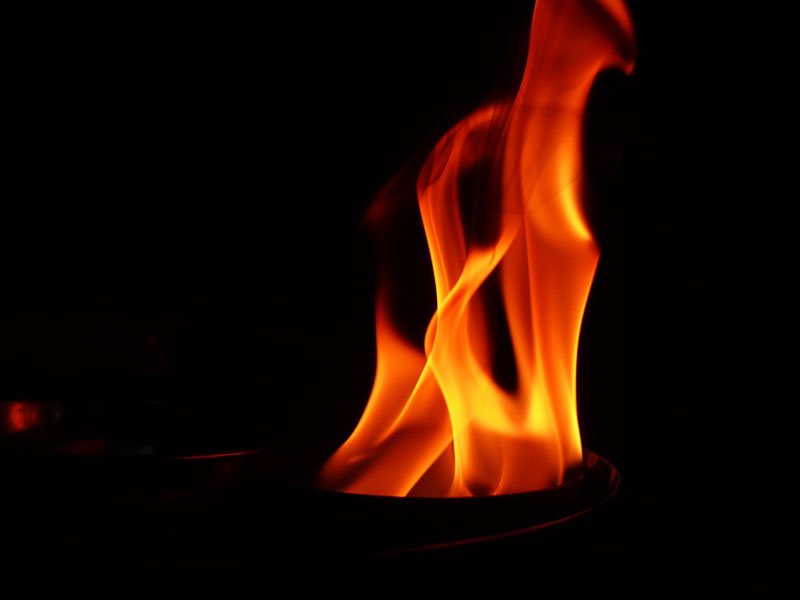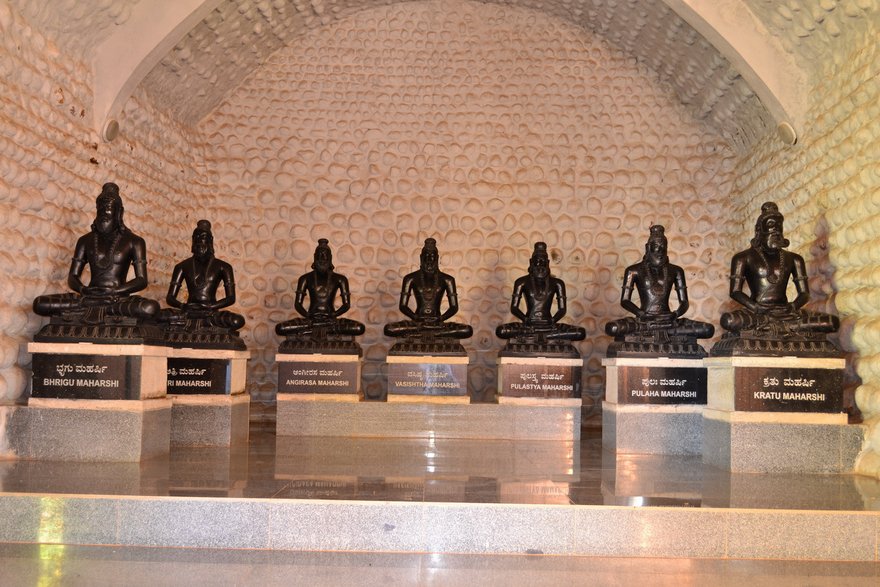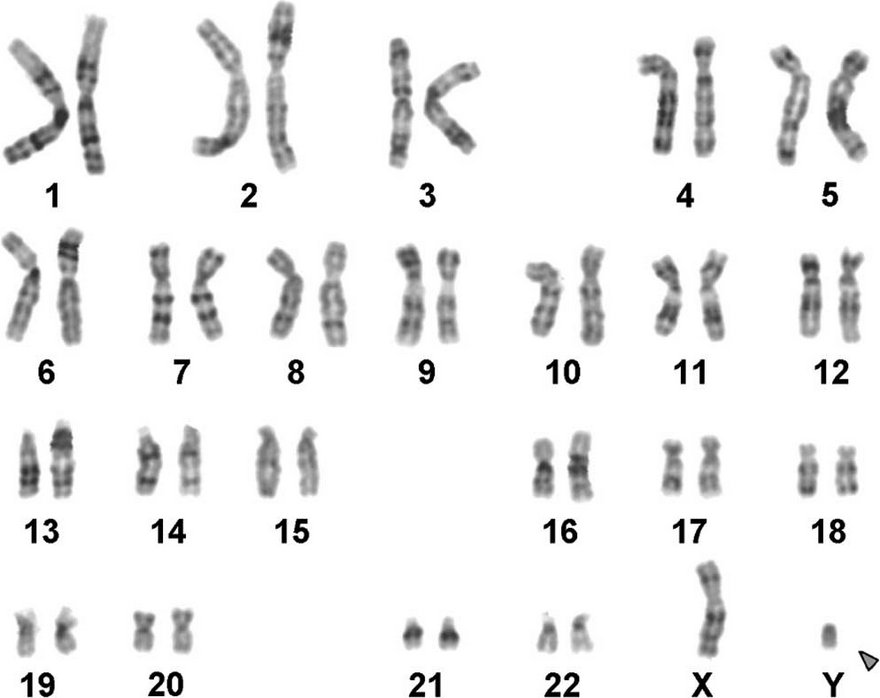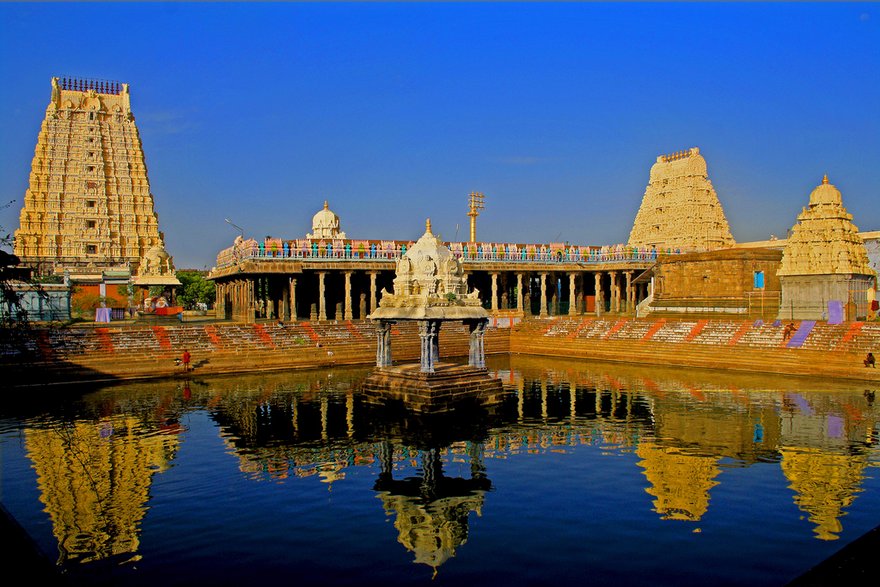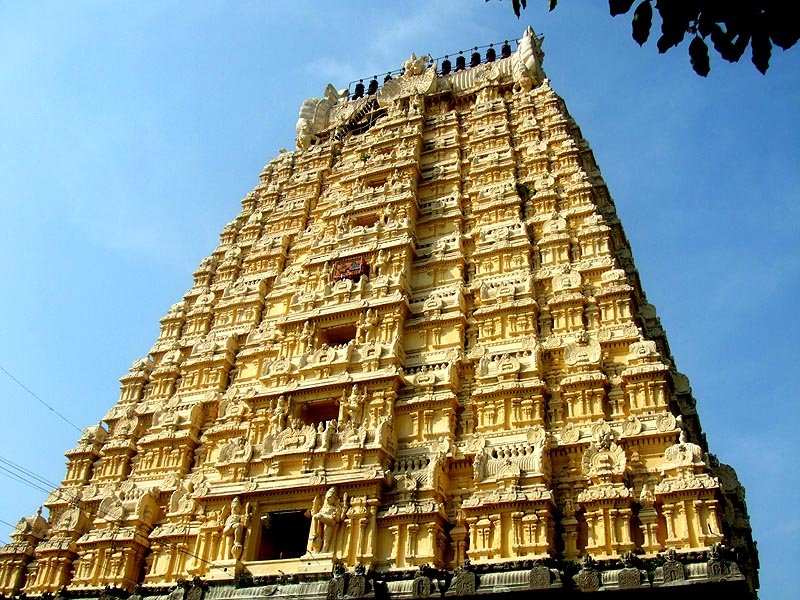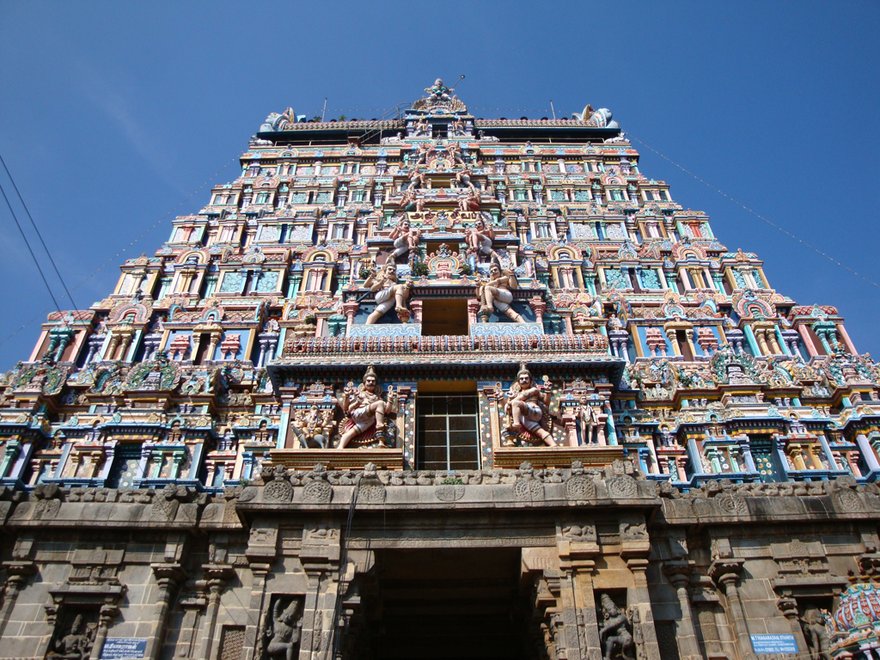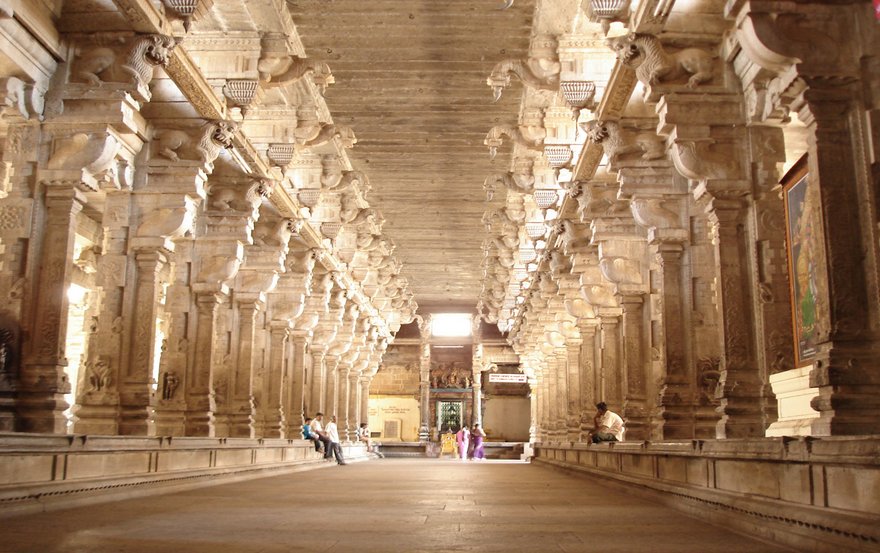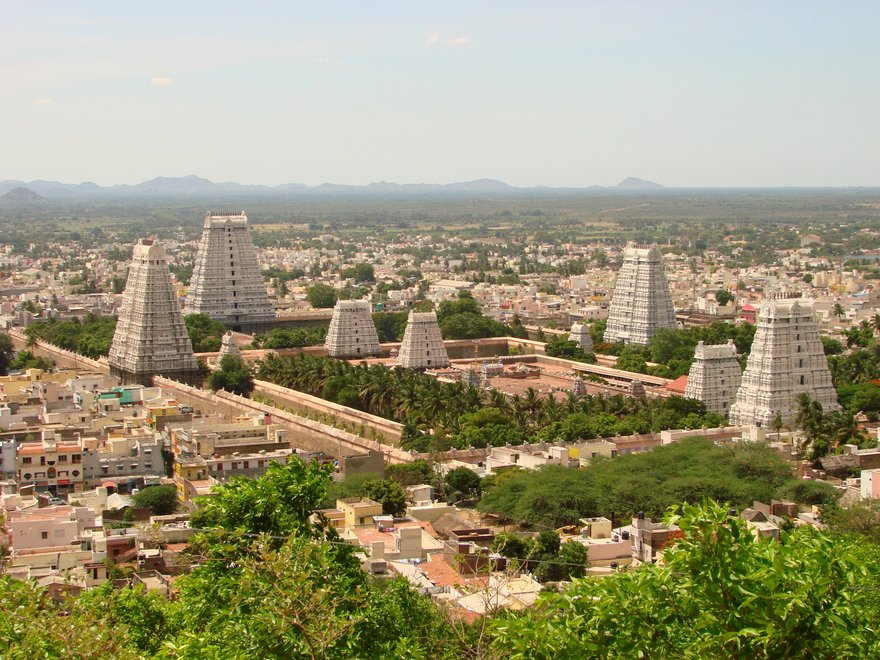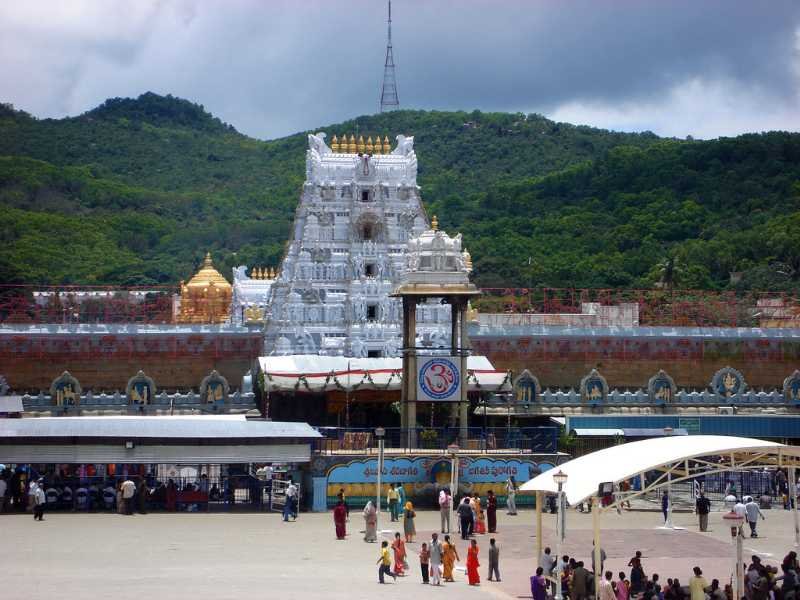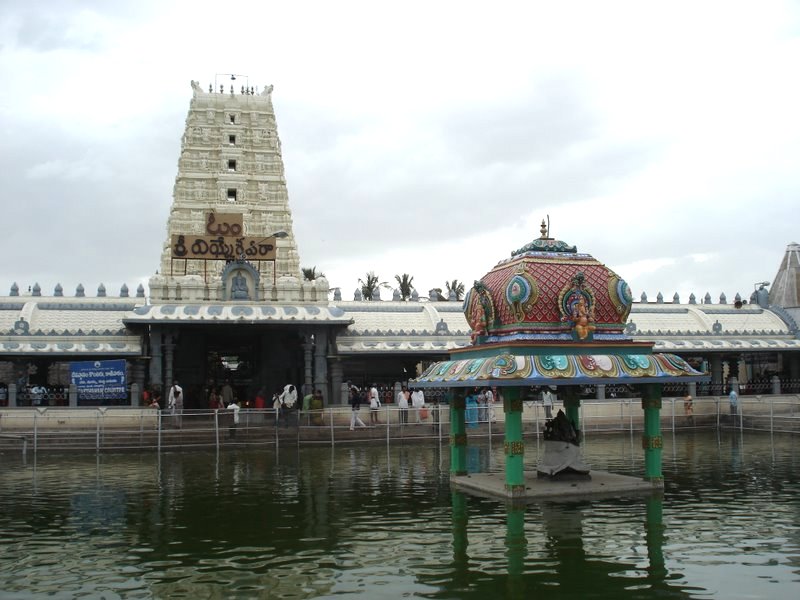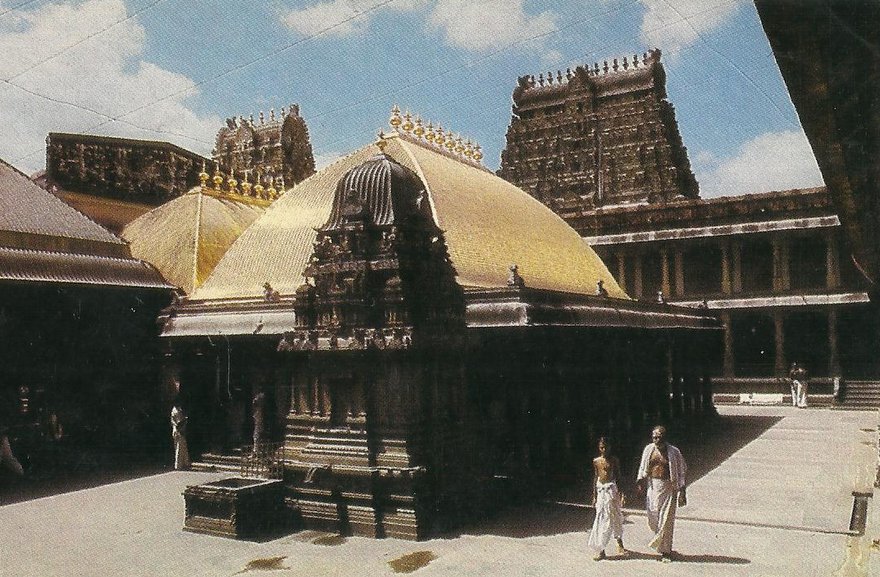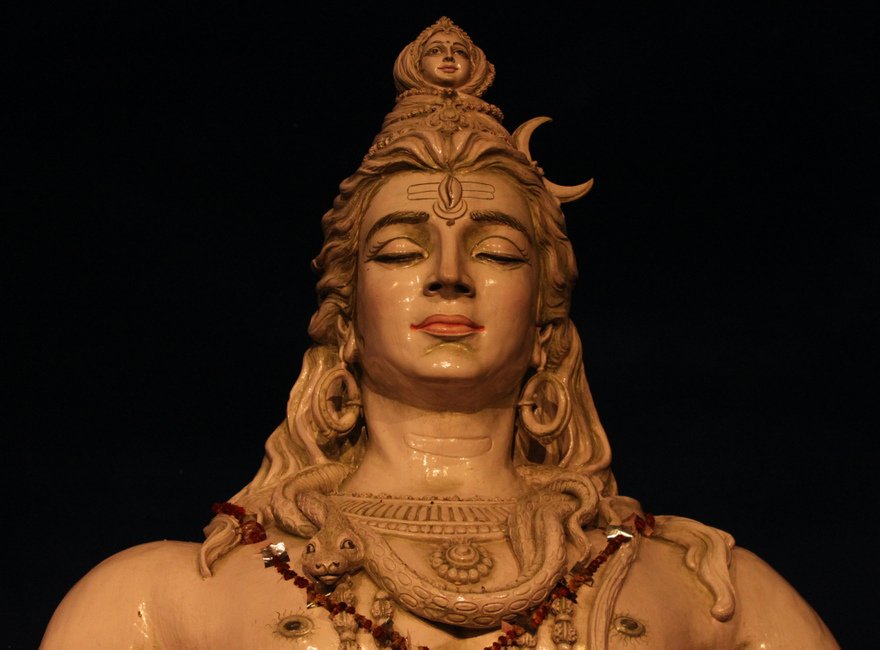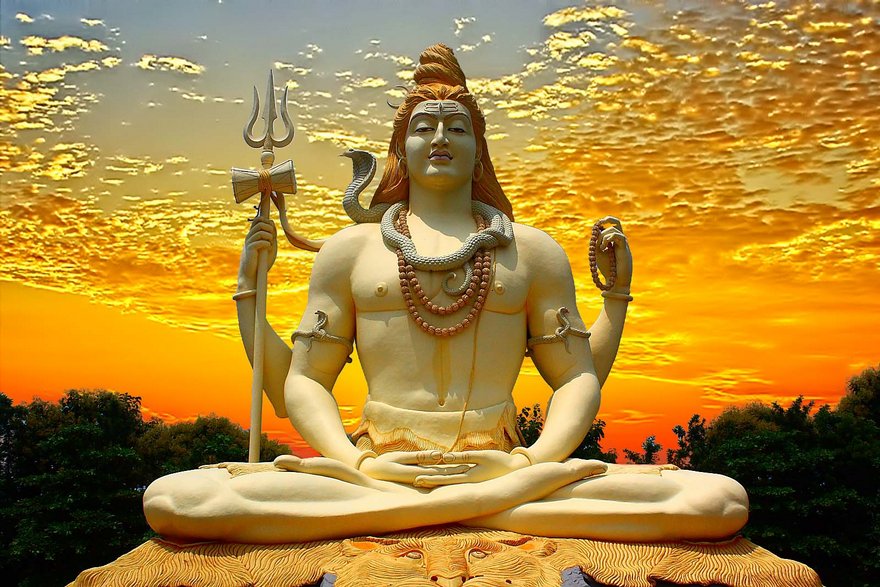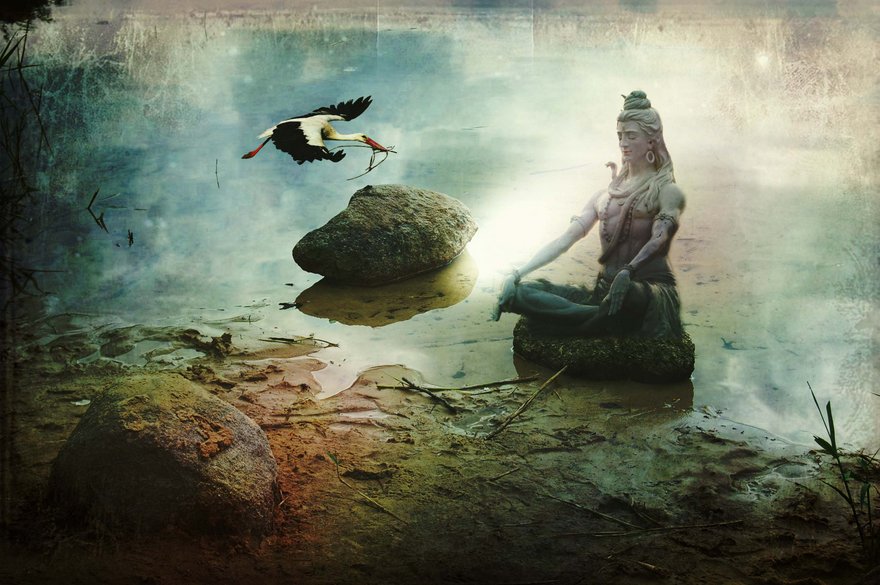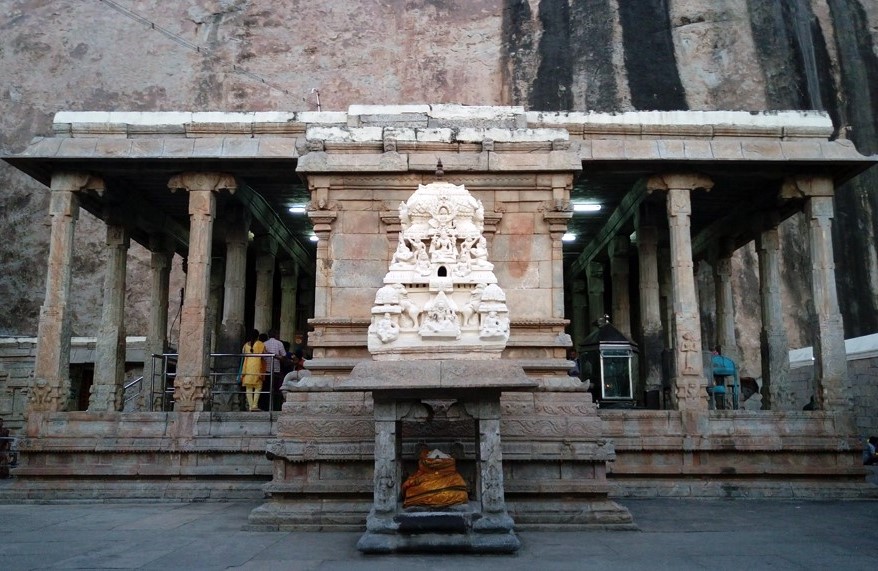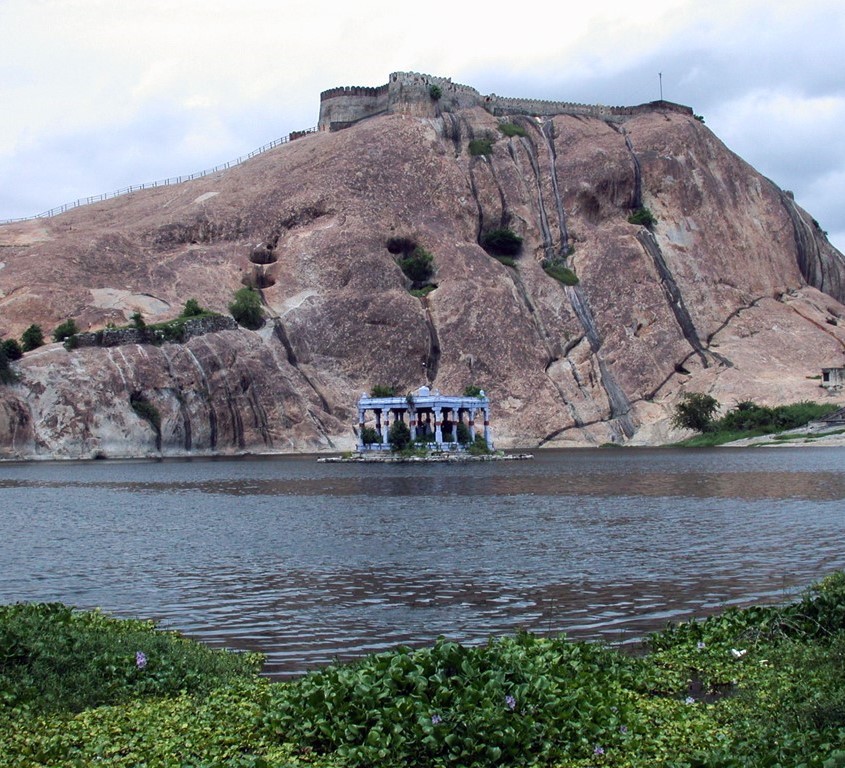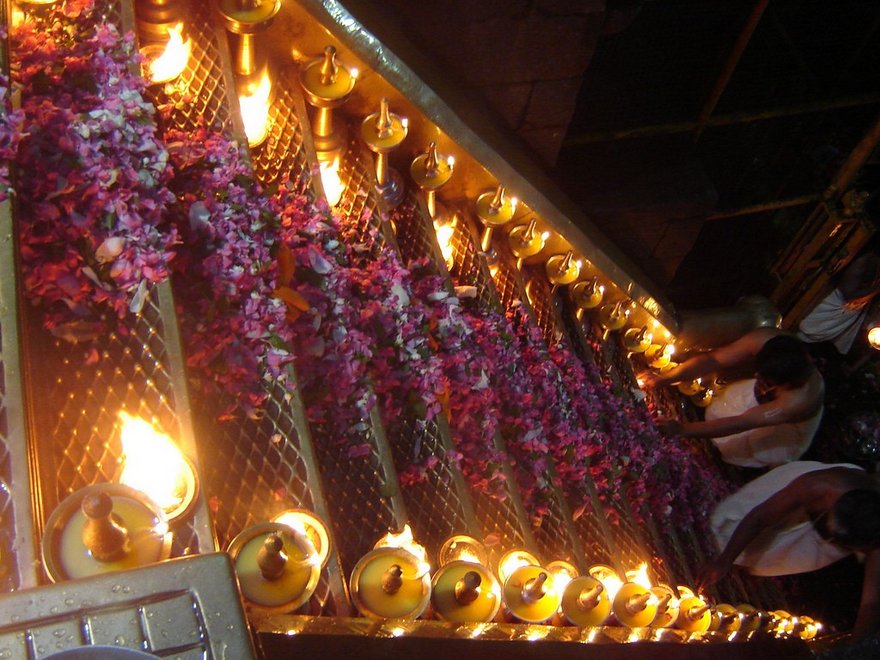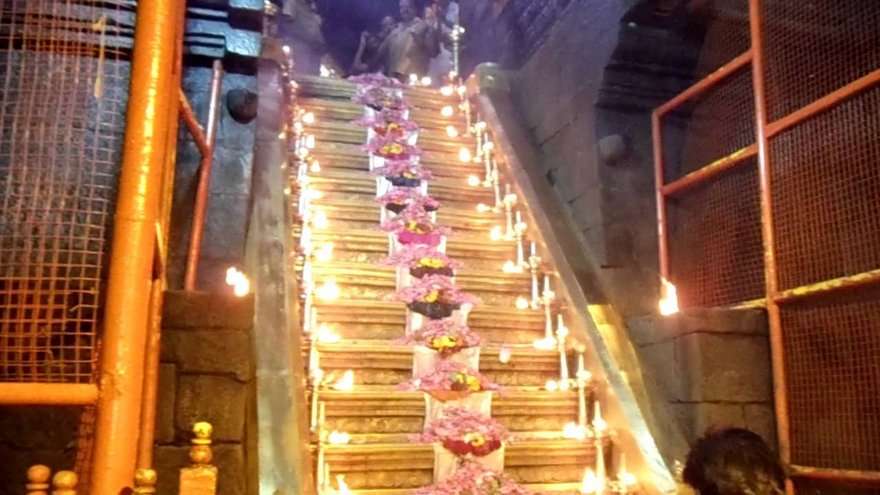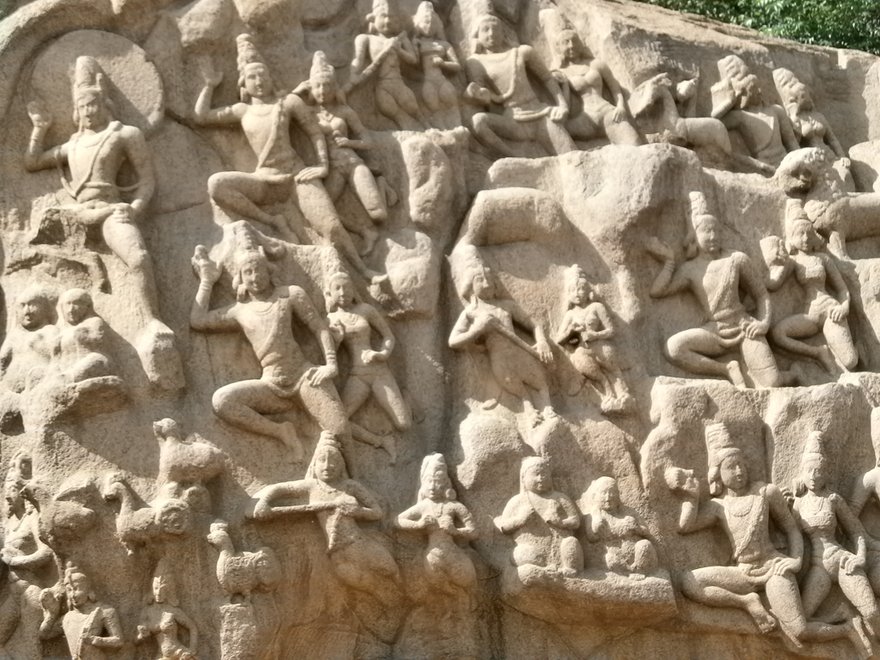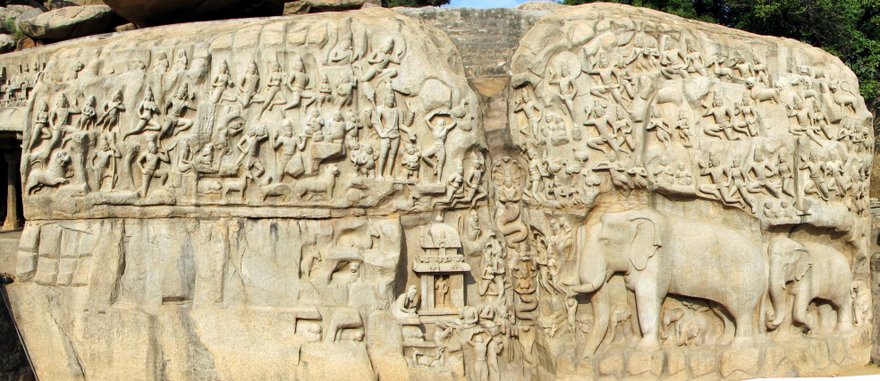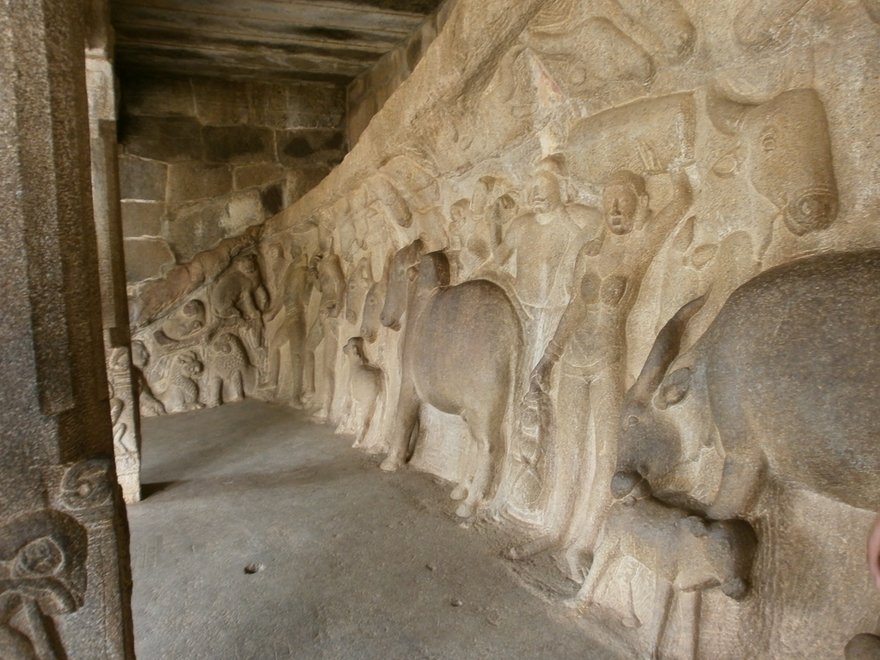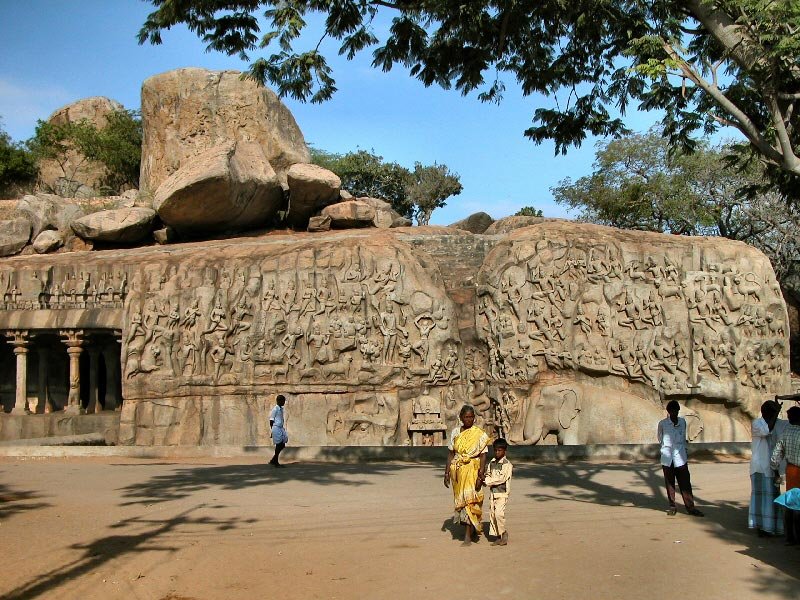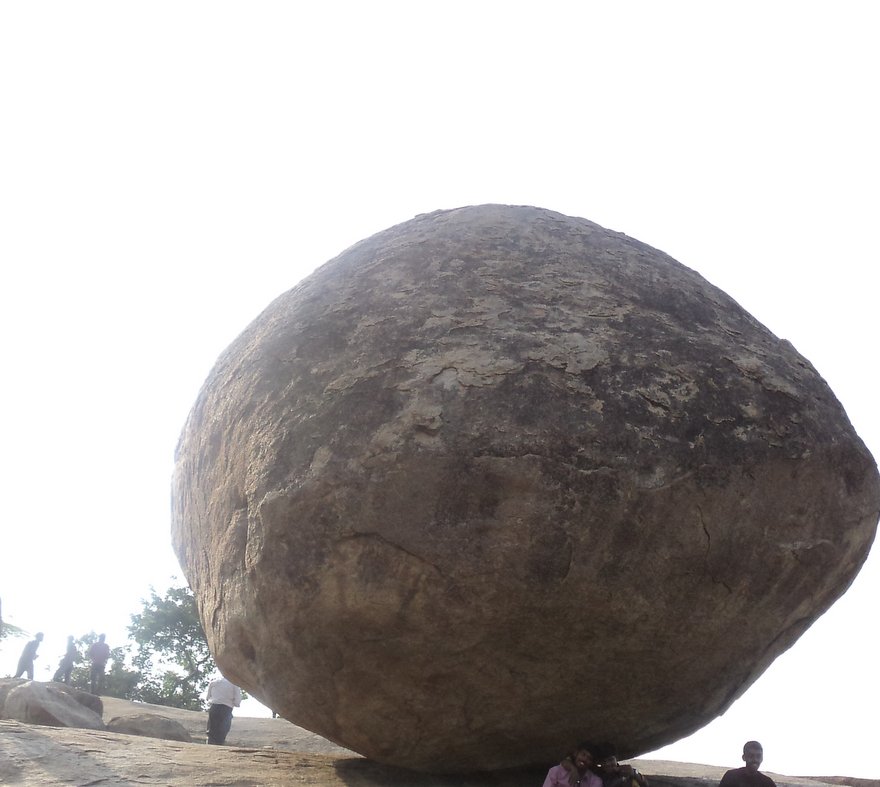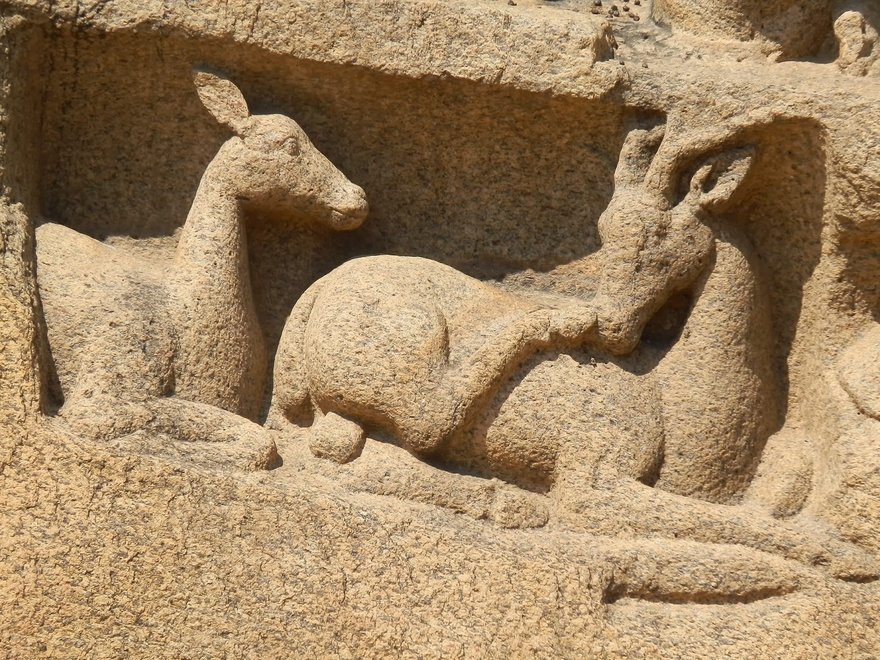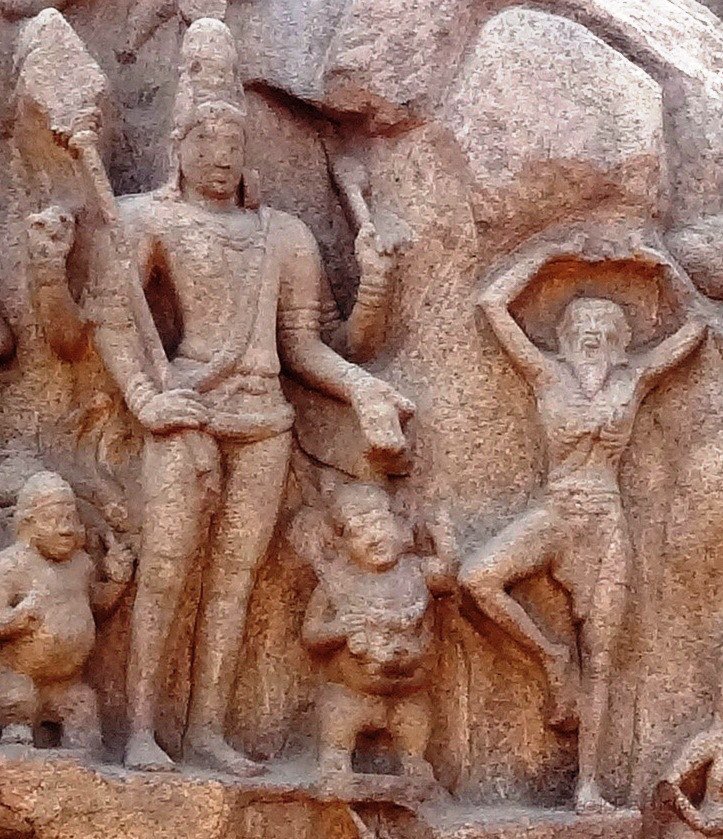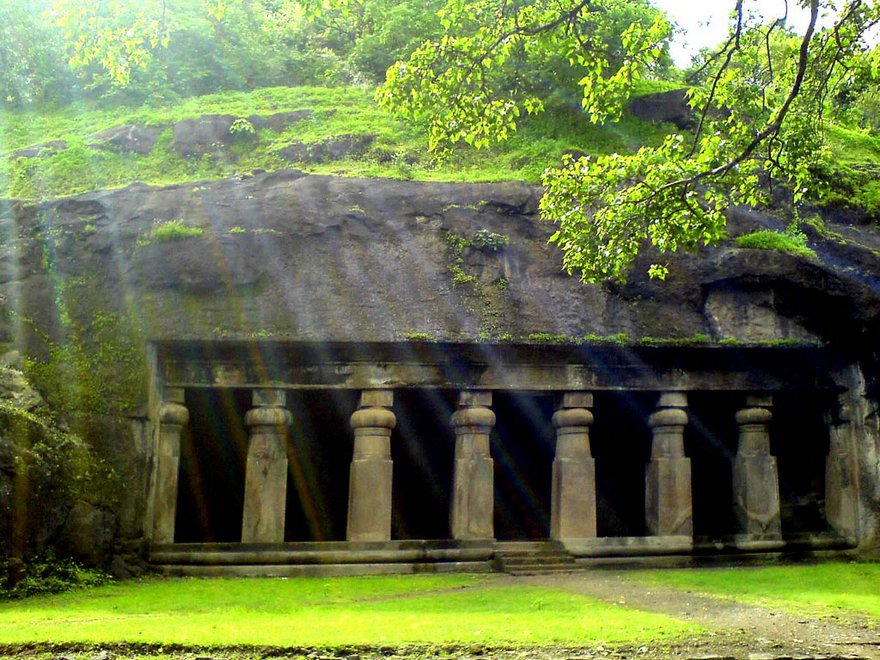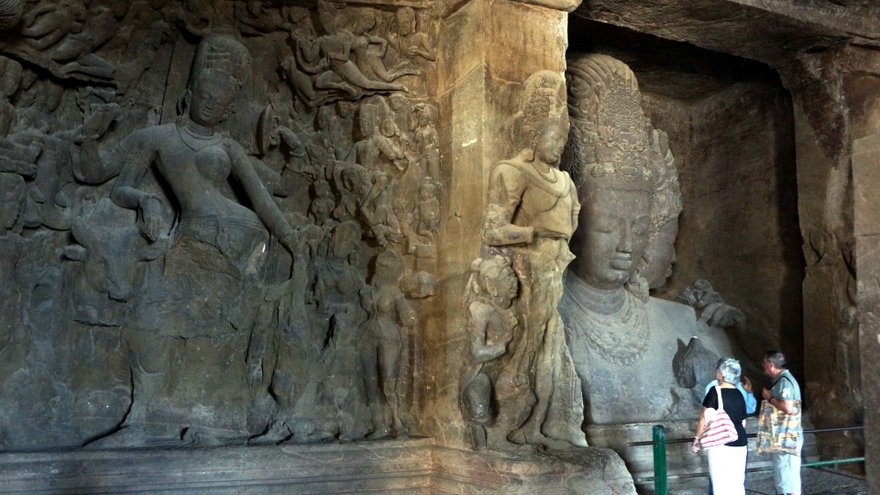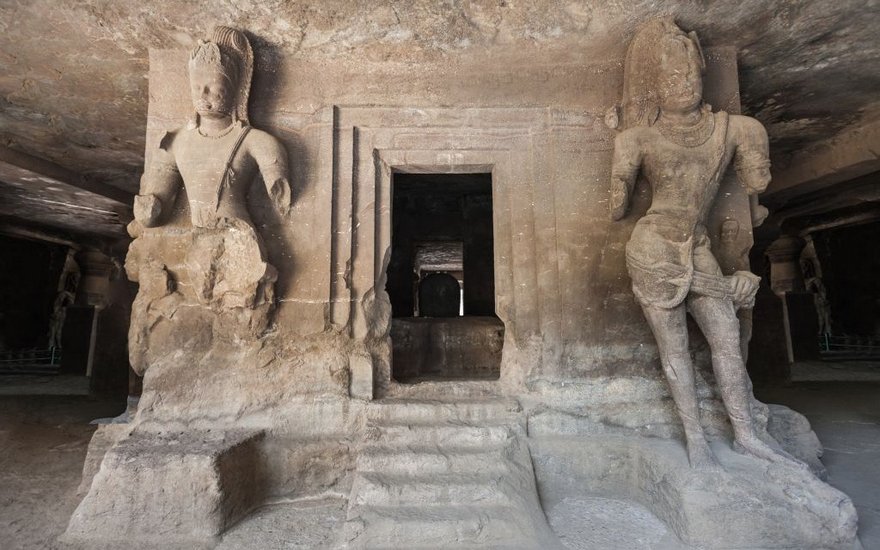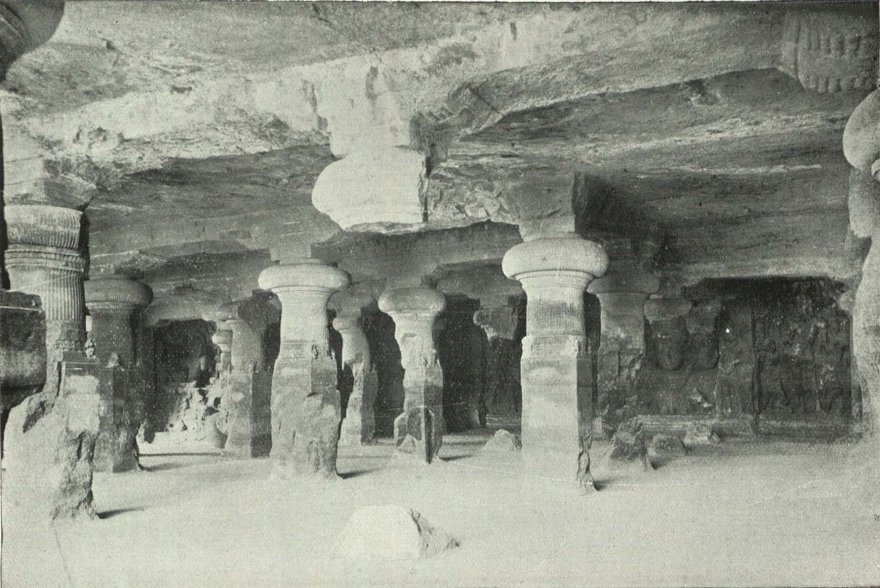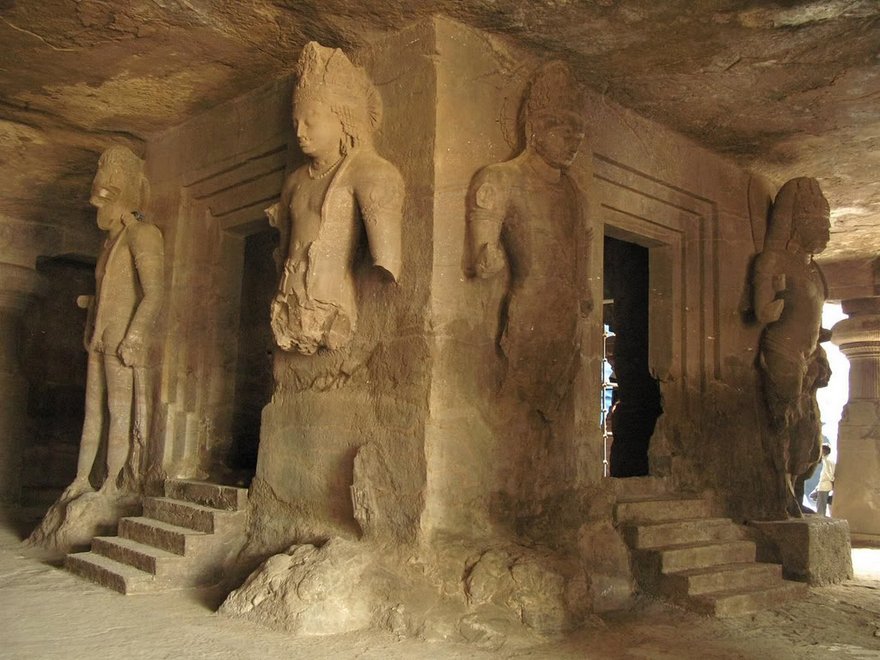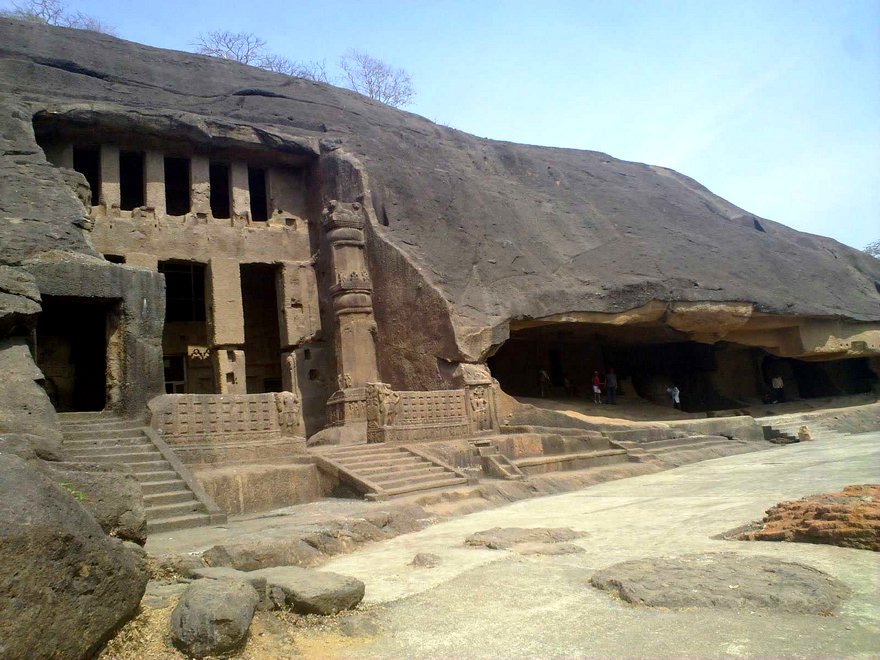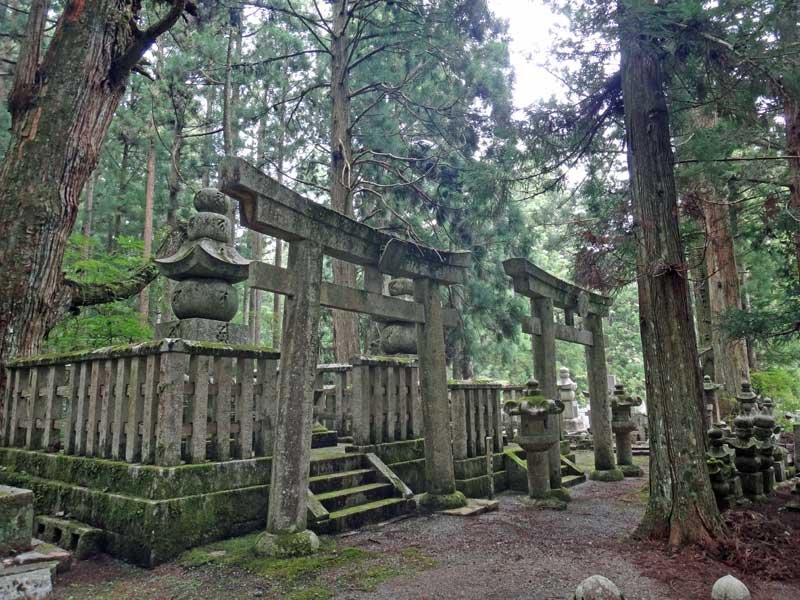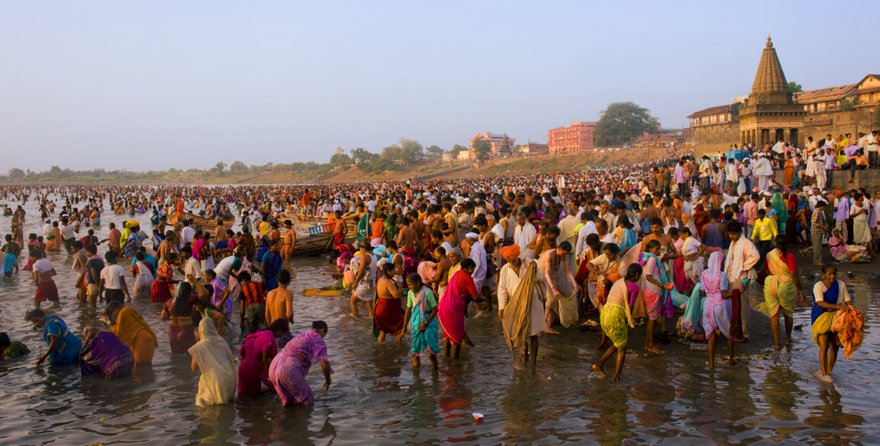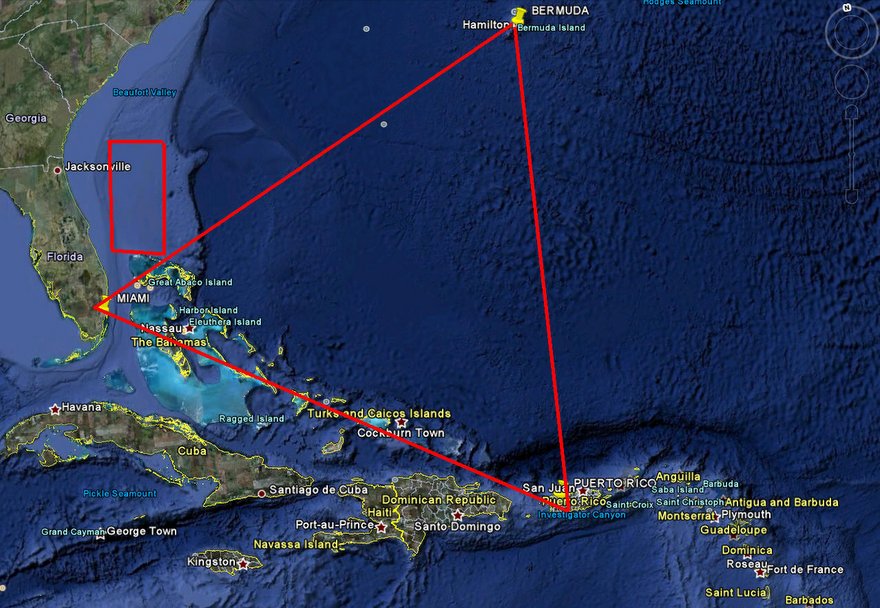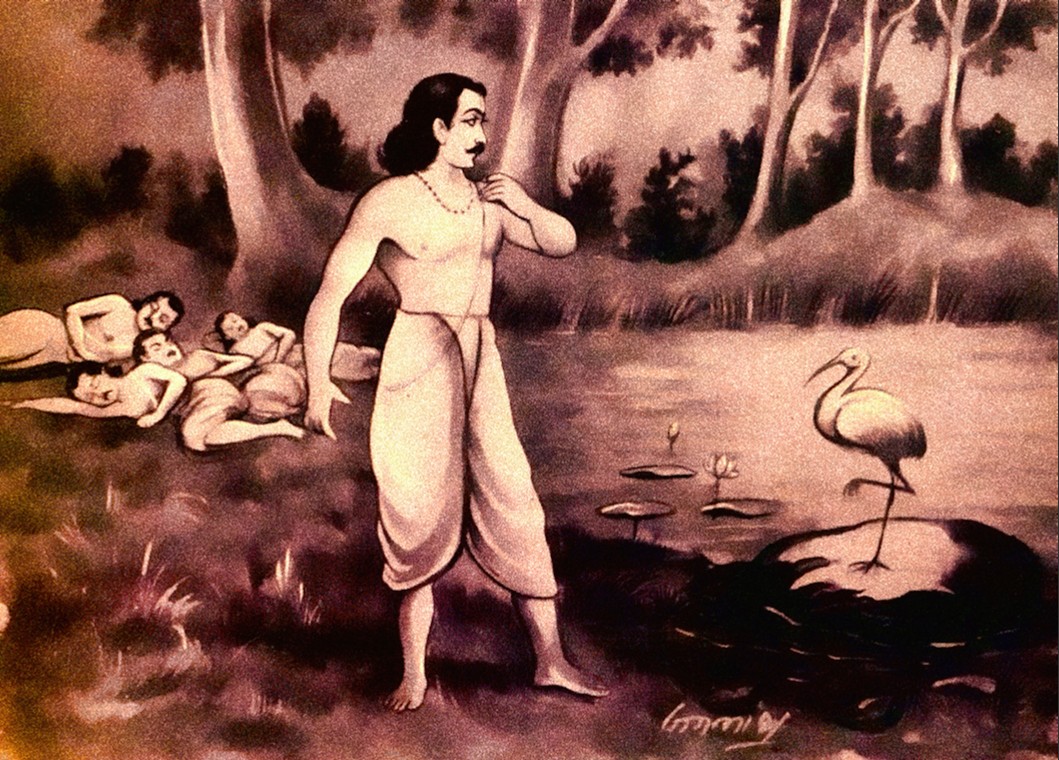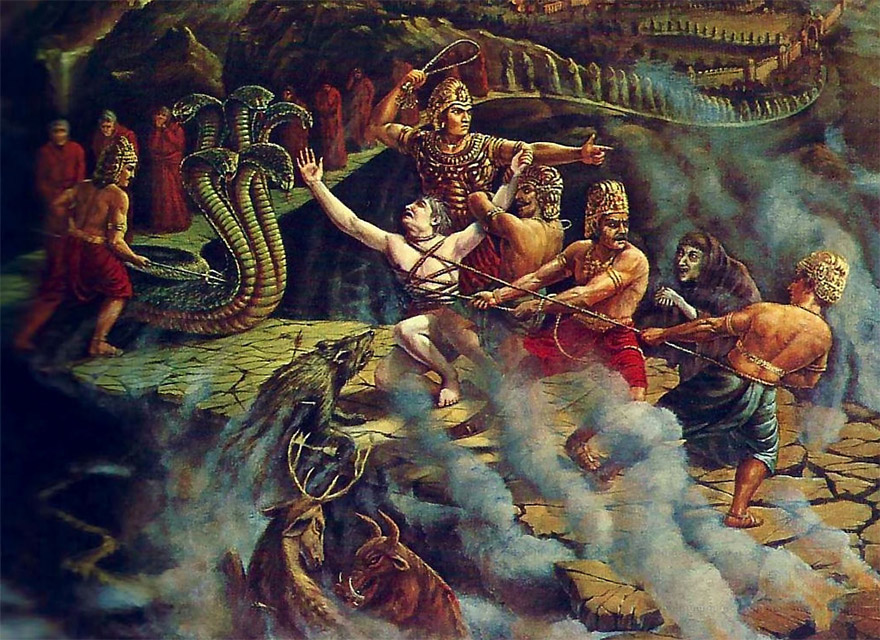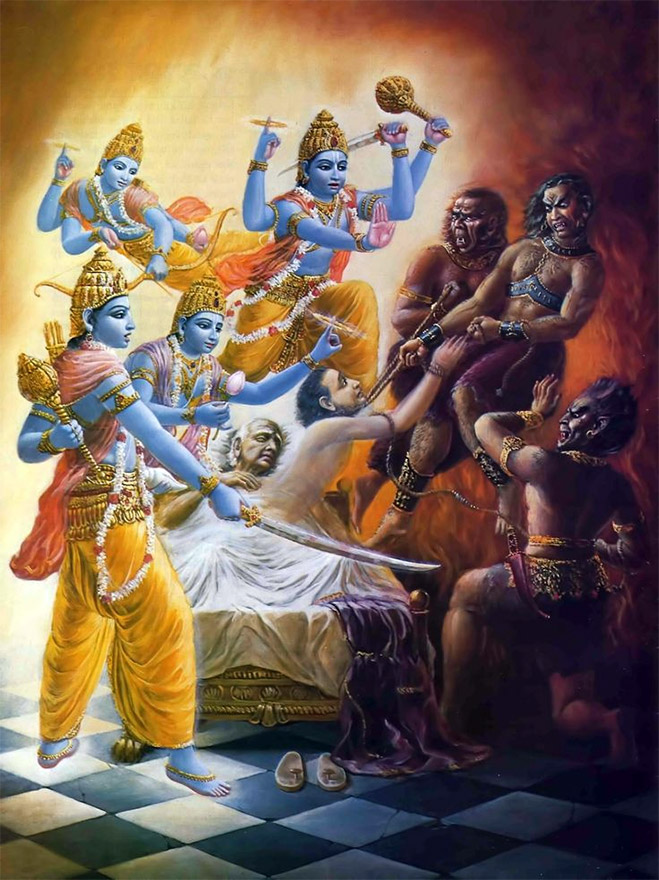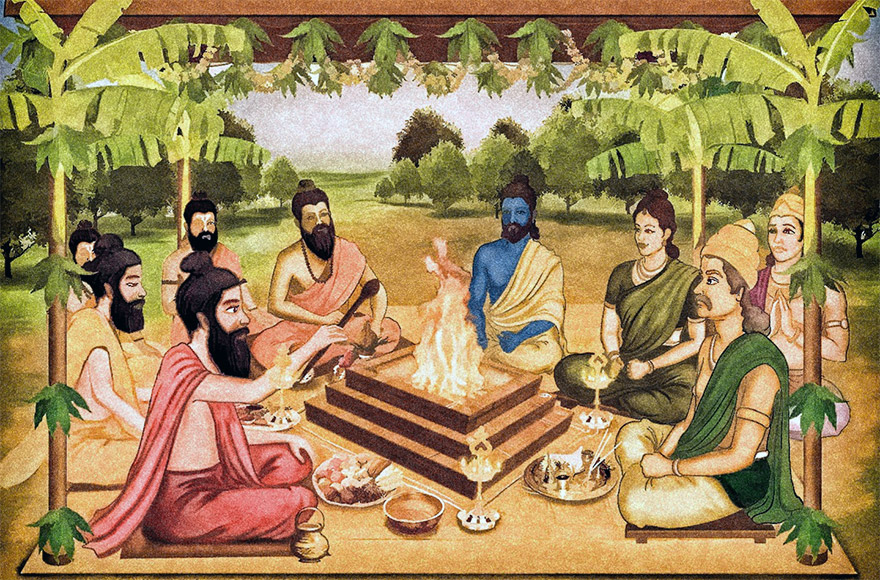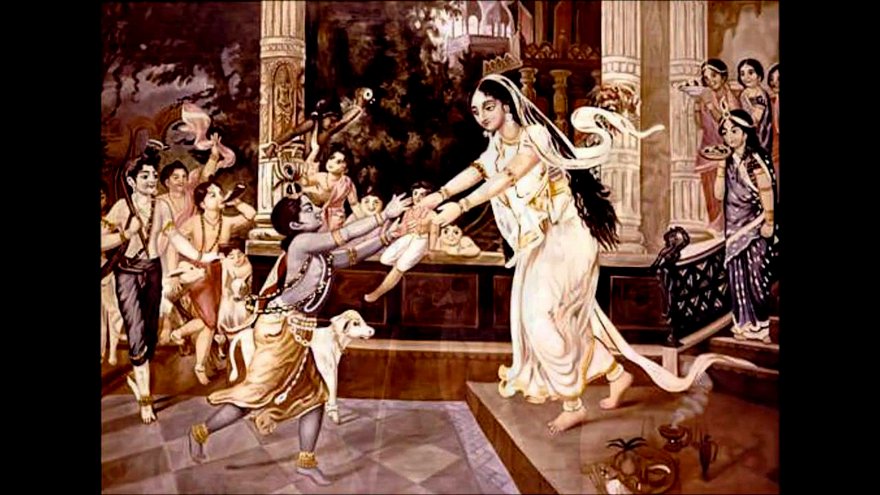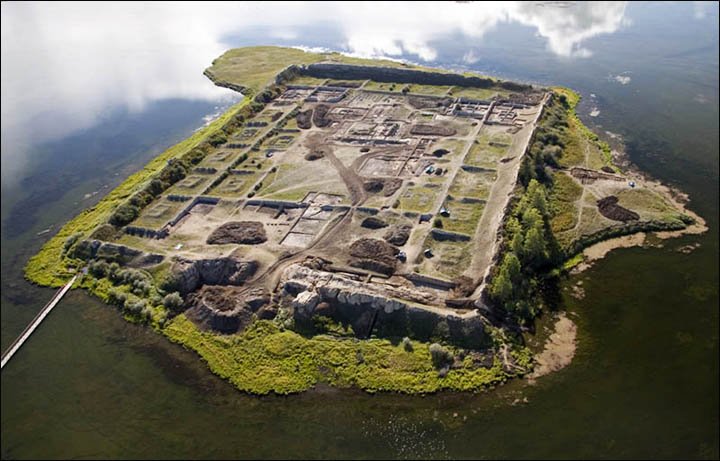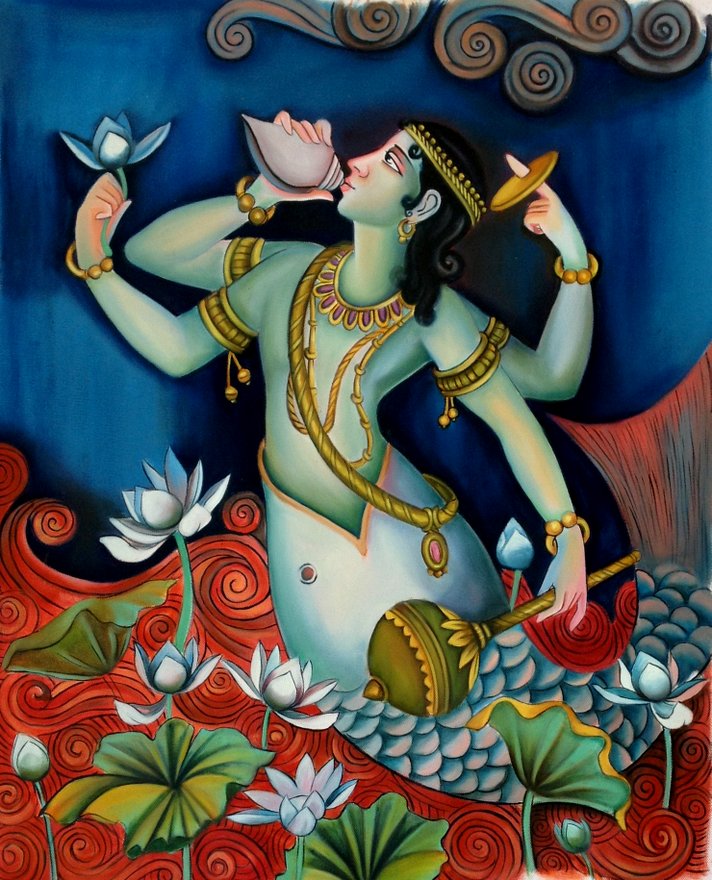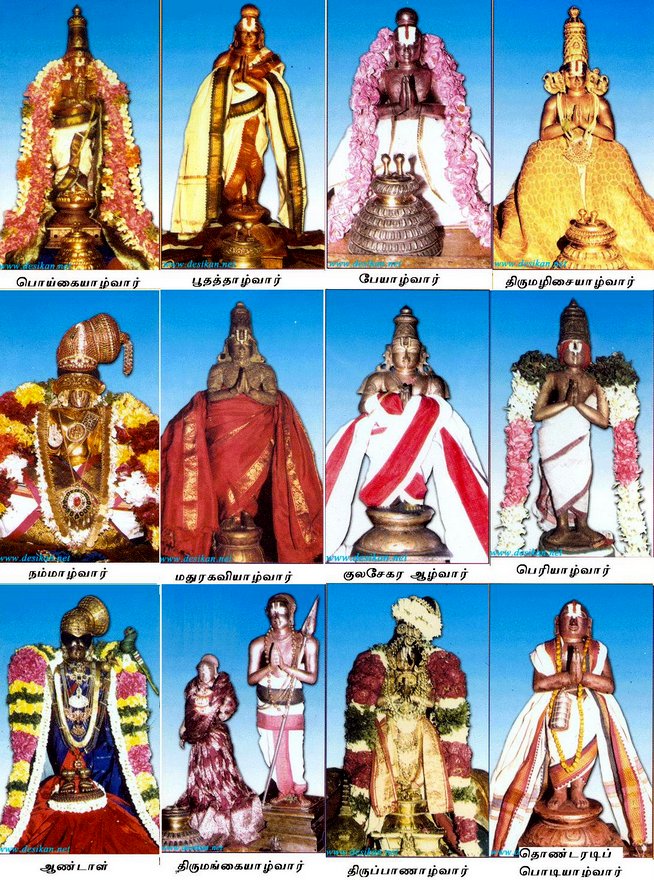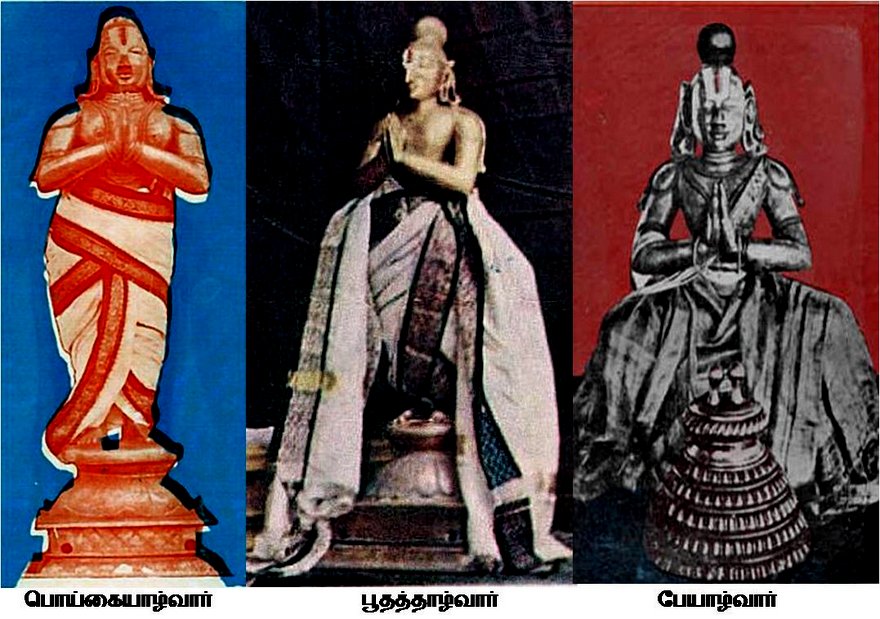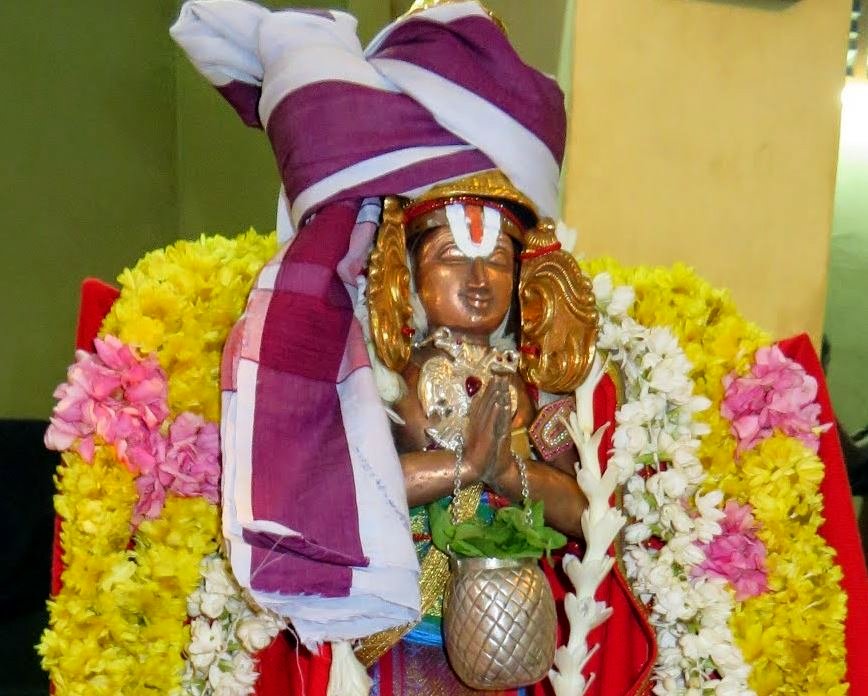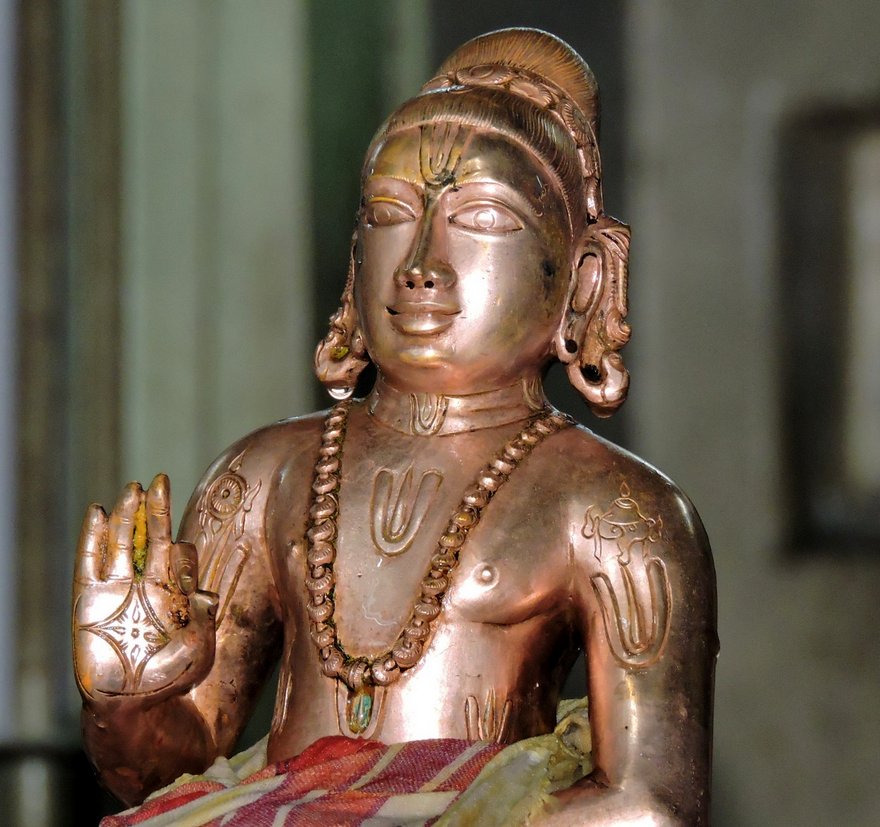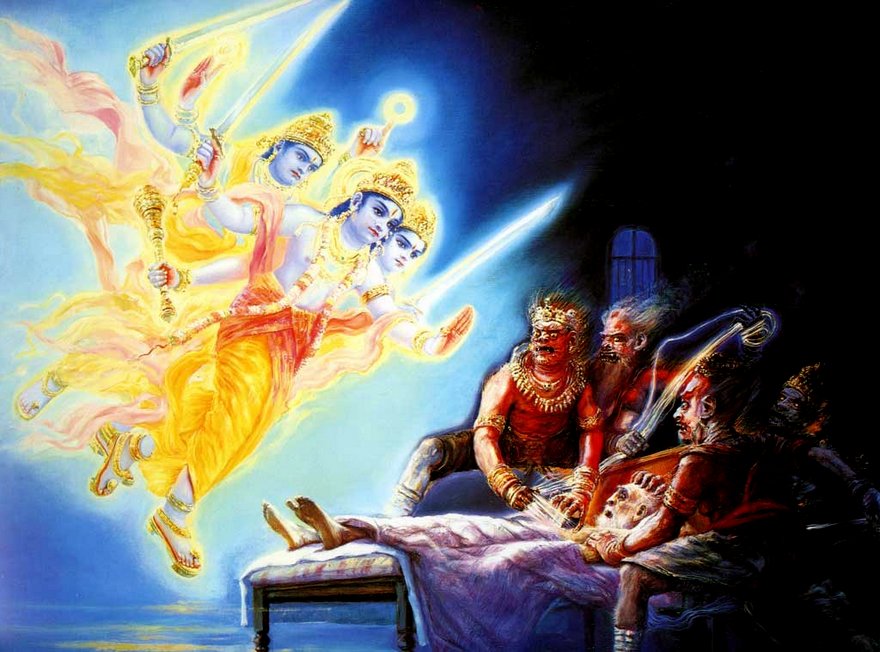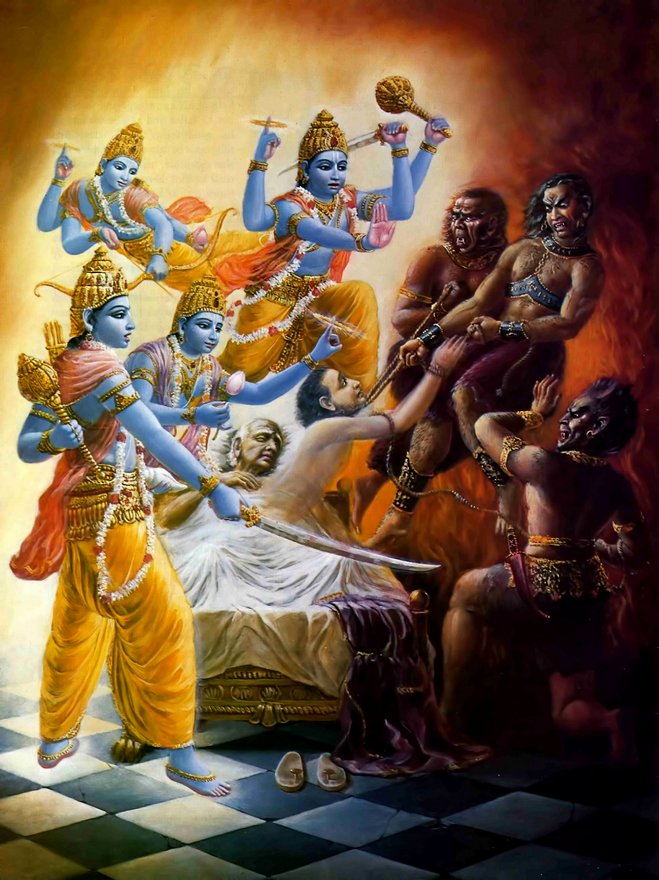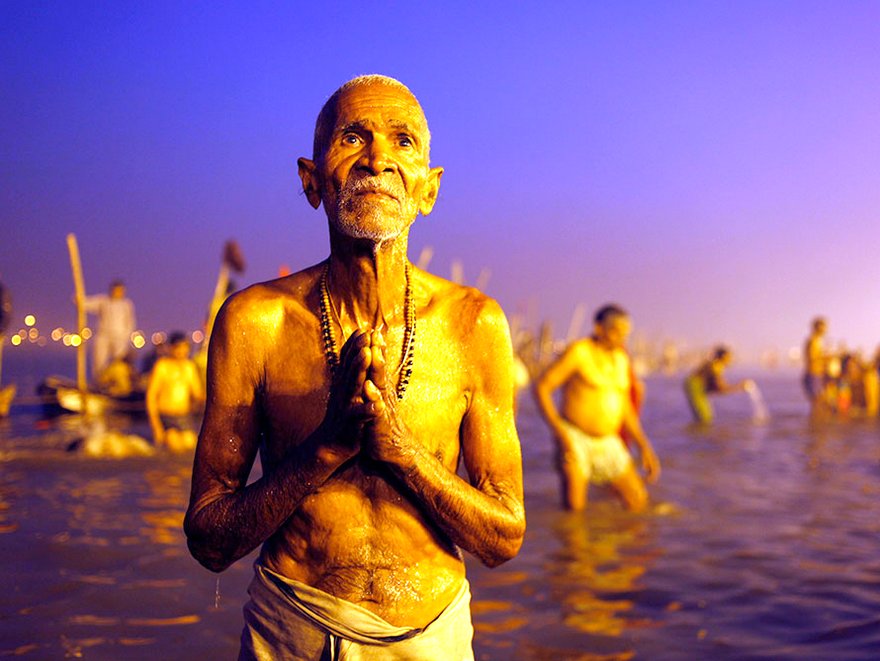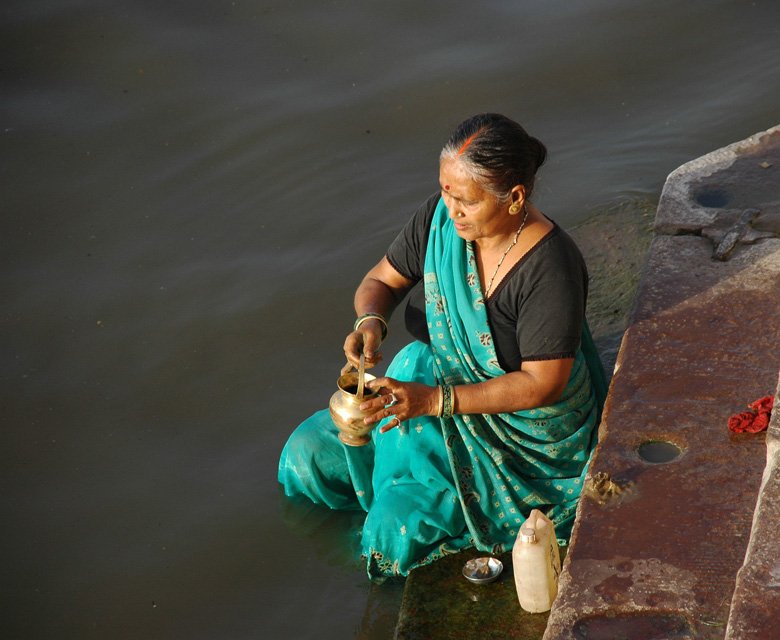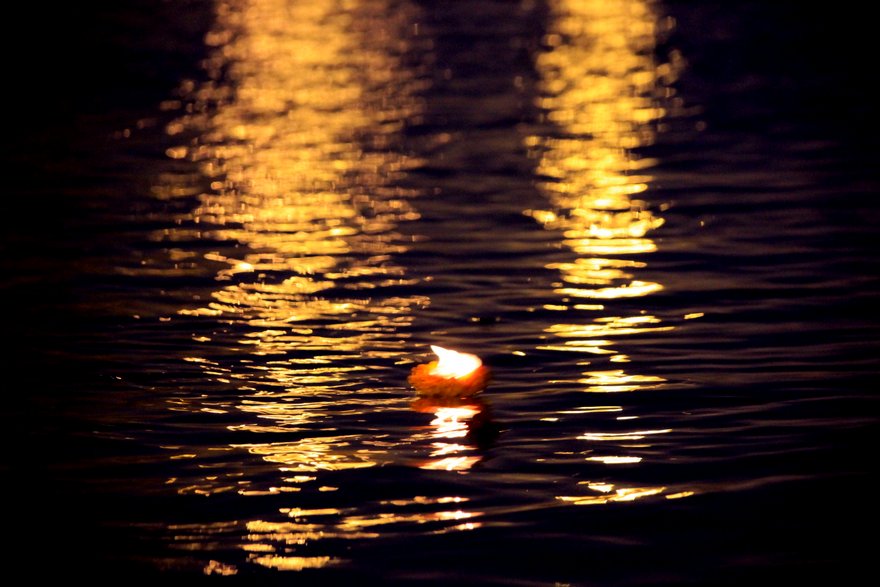![yamaduta-01]()
Have you ever heard of terminal restlessness? Probably not, unless you are a doctor or a nurse. But although the name is new, the condition is described in Srimad Bhagavatam.
Srila Prabhupada says: “And similarly, miserable condition of death. When one is lying in coma, so many sufferings is going on, so many dreaming, the Yamaduta is coming. Sometimes the man on the deathbed cries, he’s so much suffering but there is no remedy. Everyone is helpless. So that is the miserable condition of death…” Srila Prabhupad, Gorakhpur Feb 18, 1971
I will tell you how I found out about it, and this story is a classic example of the dreadful reality faced by all the suffering souls of this material world. It also shows clearly what Srila Prabhupad has saved us from and why we should feel eternally indebted to him.
It all started when I received a phone call from my parents saying that Dad was sick with cancer. I believe in omens, and my right eye started twitching profusely, so I knew that the outcome wouldn’t be good. That was in the beginning of November.
But Dad was optimistic. He was sure he could overcome everything, as he had always been the controller in every situation and had faced many trials in life and overcome them all. Until now he seemed to be a lucky guy, enjoying good facilities and good karma in every respect. Little did he know that his good karma had come to a grinding halt. If Krsna wants to save you no one can kill you, but if Krsna wants to kill you no one can save you.
Dad had prostate cancer, and it had spread into his bones. He was having chemotherapy, but it failed twice. I rang one day, and he literally wept. “I’m dying,” he said.
I felt compassion for him. He was helpless in the hands of cruel fate. I tried to help. “Well don’t worry,” I said. “There is reincarnation. You will be okay. Just pray. God is kind.”
But it was little comfort to someone who was bewildered and didn’t know God.
After that I felt that I was somehow connected to his suffering. I could feel all of his fear and anxiety. I would pray all the time. I didn’t want to experience any of it, but I guess I was karmically connected to him, so there was no escape no matter how far away I was. The physical suffering was nothing compared to the mental torture he was experiencing. He became humble, and I dropped everything a couple of times and flew from Vrindavan to be with him.
In the past he had never wanted to hear anything about Krishna, so I had given up trying years ago. We never discussed the subject. I would just feed him prasad (he loved my cooking) and talk about other things. I had Vrindavan dust with me and some Yamuna water mixed with Ganga. There were also some small Jagannatha Deities. I deposited all these things in the house, hoping they would have an effect and using them whenever possible, in Dad’s food and so on.
I kept praying and hoping that somehow I could convince him about Krishna before he died. He was so bewildered and humbled by his lack of control over the situation that he was willing to listen to some degree. He was clutching at straws.
I read him some Bhagavad Gita, and he said that it was comforting. I also read to him from Coming Back. He liked that because the idea of reincarnation was something positive to look for in the future, and he was desperate for that. I saw in there the chapter about Ajamila and felt I should read it to him, but thought maybe it was too much to thrust upon him. Besides, I was there, and because I was chanting everything it would be okay, or so I thought.
![yamaduta-02]()
I really believed you could just chant Hare Krishna and all bad things would go away. I guess this is a superficial and neophyte viewpoint. The material world is such a heavy place, and with my great ego I, was overestimating my own purity. I realized later that I’m really not even a devotee. If you are incapable of saving yourself, how can you possibly save anyone else?
I had to fly back to Vrindavan several times, as I had family and business commitments, but the whole time I could feel him pulling me. I had zero mental peace during this time. I think he really wanted me there and was emotionally dependant on me, as I was the only one offering any tangible solutions.
People are basically not sympathetic either, and he needed a lot of understanding. I am not good at handling suffering, so this was difficult to bear seeing someone you care for suffering so much anxiety. I left my Jagannatha Deities there and asked them to forgive any offense but to please protect my father while I went back to India on business just for a couple of weeks.
Then my mother rang. She was at her wits’ end. “Please come,” she said. “He is in hospital now, and we need you here.” I jumped on the first flight, and as soon as I arrived, I moved into the hospital with Dad. It was incredible how Krishna seemed to arrange it. They gave us a private room and let me sleep there and care for him. Nobody questioned my authority, and my mother just backed off and let me do anything. She is a Roman Catholic and doesn’t usually allow me to speak about Krishna.
I realized that the karmis are so far into denial that they try to avoid the reality of death as much as possible, so it was a way out for her if I took the burden. She could go home and pretend nothing was happening, yet still know that Dad was being taken care of by me. Or maybe deep down she also felt desperate for his spiritual welfare, and I was the best solution they had. I’m not really sure. Once it all goes beyond their material perception and control, they become completely bewildered. I only know that I was able to fully take over the care of my father. Many people must suffer and die alone in hospitals going through what I am about to tell…
I slept next to Dad and tended to his every need. I managed to get Tulasi beads on him, which one demoniac nurse kept taking off. I got mental about it. Oh no, I thought, he is so sinful, he can’t wear Tulasi. Then I just got in this mindset that I was going to be aggressive and keep those beads on him no matter what. She would take them off, and I would just smile sweetly and put them right back on.
I read some Bhagavad Gita to him. He didn’t eat at all for the twelve days leading up to his death. For eight of those days he had only Ganga and Yamuna water and nothing else. I controlled everything that went into his mouth. I even started sprinkling Vrindavan dust in his water as well.
Toward the end, he was on another level, not of this world. He seemed to be perceiving things that other people couldn’t. For example, every night I would put on a Shiva T-Shirt to wear to bed. There was a large picture of Lord Shiva on the front of it. My habit was to wait till he was asleep and in a subtle manner, sprinkle a little bit of Vrindavan dust on his head in case he died while I was asleep.
One night I had just sprinkled the dust, and he sprang up with a wide-eyed look of amazement. “Oh, you’re all surrounded by dust,” he said.
Another night, in the same way, he sprang awake and looked at my Lord Shiva shirt. “Careful!” he said. “There’s fire coming out of your shirt.” The day before he died, he said there were big dogs in the room and an ugly person floating outside the window.
The evening before his death he began to feel disturbed. “Untie my legs,” he was saying to I don’t know whom, and he was visibly distressed. My mother and my daughter decided to stay overnight at the hospital, which they didn’t normally do. I drifted off to sleep and so did Mum.
At about 9.30 pm my daughter woke me up. “Mum,” she said, “come quickly! Something’s happening to Grand-dad.”
I raced over to the bed and Dad was moaning. “Please, please,” he was saying, “I beg you, let me loose, please let me loose.” His tone was humble and terrified, and his eyes were lowered. He was to say these words many, many times over the next six hours. He was trying to jump off the bed and hide under his pillow. You have to understand that he was skin and bones. He couldn’t even urinate without help, and here he was suddenly trying to get up and run off.
He was thrashing around like a mad man. This is really inauspicious, I thought. I grabbed him by the shoulders. “Dad,” I said, “what’s happening? You okay?”
He was terrified. “Oh Sue,” he cried out, “I tried to get away, I really did, but they got me.” His voice went up to a shout. “She’s got me!” he yelled out.
At that time I should have realized what was happening, but the fact that he said, “She’s got me” put me off, and somehow I got covered over, and for the next six hours I just tried to comfort him.
He cried out again and again. “Oh, for God’s sake,” he would shout, “just let me rest, just ten minutes. Please, I beg you.” His tone of voice was terrified and all the while humble and begging. I would chant and he would relax a little. Then a nurse would come and distract me, and he would start again, thrashing and begging.
“What’s wrong?” I asked.
He seemed exasperated. “I’m trying to tell you,” he said, “but I just can’t.”
Then at 3 am it suddenly dawned on me that the Yamadutas had him. It was so obvious, and I felt so foolish for not realizing it until now. I turned to my 13-year-old daughter and told her I thought the Yamadutas had him.
“Yes,” she said. “I know. I woke you up because I saw three of them floating above his bed, and he was cowering and looking up.”
She had actually seen them. She described later how they looked, with boar-like tusks coming upward out of their mouths and glaring eyes. She had thought they were some kind of ghosts trying to steal his soul from his body. Of course, by Krishna’s arrangement, my mother was sleeping, oblivious the whole time.
What to do? I thought. I started to pray to Krishna: “Oh, please let him go, Krishna.” I was begging.
Then Supersoul would answer. “Why?” He would say. “He will only offend again.”
Then I was really upset. I started praying to Yamaraja” “Please, Yamaraja…” And all the while, I was chanting. I told Dad I was sorry I hadn’t realized sooner that they had hold of him. He nodded, traumatized. His whole death experience was hellish. I’m sorry that any souls have to experience such a thing and understand now why Srila Prabhupad felt such urgency to save everyone.
“Dad,” I said, “do you want me to hold you and chant?” “Yes, yes,” he said. “Have they still got you?” “No, they let me go.”
Then I held him tight for the next three hours, and he slowly gave up his life, through his mouth, peacefully with me chanting right in his ear and dripping Ganga and Yamuna water into his mouth. I stayed fully focused on chanting very close to his ear until he breathed his last, at 6 am. He went straight out of his mouth and his eyes just closed.
Poor him! Cruel, cruel, hellish material world! It had been only seven months from the start of his illness, and the seventy-one-year story of his life was forcibly ended.
While he would be thrashing and crying out “Let me loose!” I’d ask the nurses what was happening.
“Oh, it’s normal,” they’d say. “He’s just fighting it, and it happens to everyone. There’s even a term for it. It’s called terminal restlessness. And they give nurses’ seminars about how to deal with it.”
Well I’ve got news for you, folks. It’s actually terminal Yamadutaness. Of course they are advised to just pump them full of morphine and ignore all their ramblings.
Another thing is that no one is meant to know about it. It was purely Krishna’s mercy that we were able to realize it, and even then I almost missed it. For six hours I was confused and yet Dad was telling me quite clearly and begging for help, so some sort of maya is covering the whole thing and people aren’t aware of it. Only the person who is going through it knows.
Mention is made of the dogs. A devotee told me afterwards that they were reading Yamaraja scriptures, which give detailed descriptions, and it is said that the hounds of hell come ahead several days before and sniff out where the rascals are dying.
There was also the fact that he said, “She’s got me.” Apparently the Yamadutas have their own society with wives, kids and everything. Since they are also living entities in this material world, they are born into that society.
I don’t usually put pen to paper, as I don’t feel at all qualified to do so, but mother Radha Kunda Devi Dasi encouraged me and said that this experience should be shared with all the devotees. So please excuse my shortcomings. I am not very philosophical or academic. Here are some of Srila Prabhupada’s comments on the subject:
“To see the Yamadutas, or the carriers of order of Yamaraja, superintendent of death, to see face to face… At the time of death, when one very sinful man is dying, he sees the Yamaraja or the order carriers of Yamaraja. They are very fierce looking. Sometimes the man on the deathbed becomes very much fearful, cries, ‘Save me, save me.’” Srimad Bhagavatam lecture, Denver, July 2, 1975
“But you take this mission and go everywhere, in every corner. I am thankful to you. You are already doing that, in Europe and America, [people are] deep asleep. Because people are sleeping under misguidance, and they are becoming candidate for being carried away by the Yamaduta. This is the position of the whole world, Yamaduta. Yamaduta will not excuse you, however you may be very proud of becoming independent. This is not possible. To save the human civilization, the rascal civilization, that ‘There is no life after death, and you go on enjoying as much as you like,’ this wrong civilization is [a] killing civilization. So you save them. You save them. Otherwise the Yamaduta is there.” Vrindavan, September 5, 1975
“This man was like this, and he must be carried to Yamaraja for punishment…” Why punishment? No, to make him purified, it is said, ‘Punishment required.’ This is nature’s law. Just like if you have infected some disease, the punishment is you must suffer for it. The punishment is good. If you have infected some disease, and when you suffer, that means you become purified from the disease. Suffering is not bad, to become purified. Therefore when a devotee suffers, he does not take it ill. He thinks that, ‘I am being purified. I am being purified.’” Vrindavan, September 5,
1975
So I suppose that even though Dad had Tulasi beads on, he was a good man by ordinary standards, but he liked to hunt, and he had been a drinker, womanizer, and cow eater. And even though he had had all facilities for the last 28 years, he didn’t surrender to Krishna. Even at the time of death, he didn’t seem able to think of Krishna as the solution to his woes.
Srila Prabhupad sums it up in the purport to Srimad Bhagavatam 6.2.49: “At the time of death one is certainly bewildered because his bodily functions are in disorder. At that time, even one who throughout his life has practiced chanting the holy name of the Lord may not be able to chant the Hare Krsna mantra very distinctly. Nevertheless, such a person receives all the benefits of chanting the holy name. While the body is fit therefore, why should we not chant the holy name of the Lord loudly and distinctly? If one does so, it is quite possible that even at the time of death he will be properly able to chant the holy name of the Lord with love and faith.”
Purport to Srimad Bhagavatam 6.2.15: “Whatever state of being one remembers when he quits his body, that state he will attain without fail. If one practices chanting the Hare Krsna mantra, he is naturally expected to chant Hare Krsna when he meets with some accident. Even without such practice, however, if one somehow or other chants the holy name of the Lord (Hare Krsna) when he meets with an accident and dies, he will be saved from hellish life after death. One is immediately absolved from having to enter hellish life, even though he is sinful.”
In the purport to Srimad Bhagavatam 6.2.7: “The Yamadutas had considered only the external situation of Ajamila. Since he was extremely sinful throughout his life, they thought he should be taken to Yamaraja and did not know that he had become free from the reactions of all his sins. The Visnudutas therefore instructed that because he had chanted the four syllables of the name Narayana at the time of his death, he was freed from all sinful reactions.”
In the same purport, Srila Prabhupada quotes the following verses: “Simply by chanting one holy name of Hari, a sinful man can counteract the reactions to more sins than he is able to commit.” Brhad-Visnu Purana
“If one chants the holy name of the Lord, even in a helpless condition or without desiring to do so, all the reactions of his sinful life depart, just as when a lion roars, all the small animals flee in fear.” Garuda Purana
“By once chanting the holy name of the Lord, which consists of the two syllables ha-ri, one guarantees his path to liberation.” Skanda Purana
I can only hope and pray that somehow my father had a small thought of Krishna because of my feeble efforts and the causeless mercy of Guru and Gauranga.
Anyway, I would like the feedback of all the devotees. Do others have similar experiences to tell? What do you all think about this topic?
Please all of you Vaishnavas pray for my father that he may have an opportunity to serve Krishna. I was thinking myself to be the big hero, going to save my father, only to find that I’m just a big bag of hot air zero. I am such a fallen rascal that I couldn’t help him in his hour of need, and I hope this story helps others to advance their efforts in Krishna consciousness so that we can all help Srila Prabhupada in his mission to relieve all the sufferings of the fallen conditioned souls.
The post Terminal Restlessness – The Yamadutas at the Time of Death appeared first on IndiaDivine.org.
